

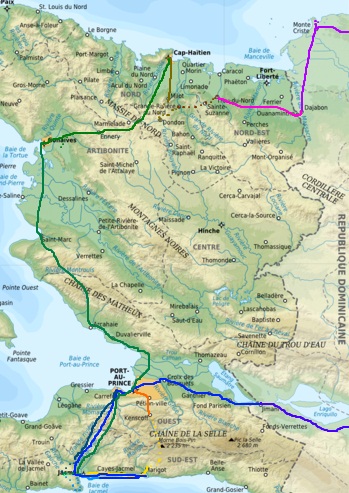
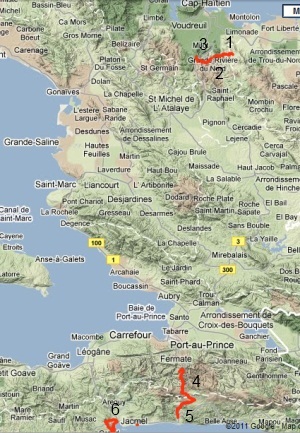
1. Saint Suzanne to Grande Riviere du Nord - 7.3 miles. This is one of my favorite trails; it follows a gently rolling ridgeline with amazing mountain backdrops throughout. The path is wide and easy to follow. Saint Suzanne is an attractive mountain village while Grande Riviere is a large town. A river crossing is required at the latter; the water is filthy and waterproof boots or sandals would be a very good idea. There are regular buses from Cap Haitien to Grande Riviere (the last one is around 5) and there are likely buses to Saint Suzanne as well (or at least mototaxis). There is currently no lodging at either end. The eastern trailhead is at the radio tower above the town.


2. Grande Riviere du Nord to Dondon-Cap Highway - 2.3 miles. Unfortunately, some unscrupulous villagers led me astray in my attempt to find the trail to Dondon. This trail will take you to the main highway between Cap Haitien and Dondon. It is scenic, but is quite difficult to follow with many forks. The terminus is 3 miles north of town; it is close to the trail for the Citadelle. You can take a bus or mototaxi into Dondon and check out the many caves there (you may need a guide to find most of them). The eastern trailhead is at the end of the road that runs west out of Grande Riviere.
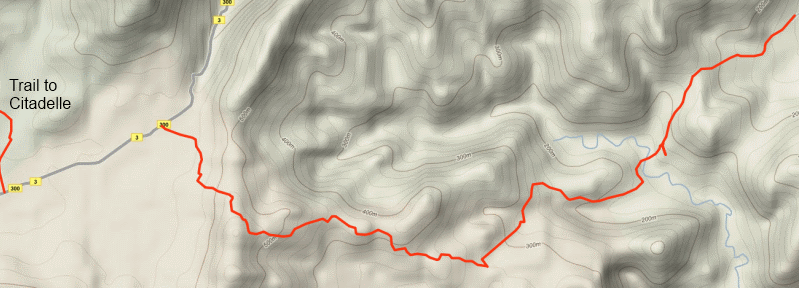

3. Dondon-Cap Highway to Citadelle - 1.5 miles. A very vertical hike up to the Citadelle parking lot. A paved trail continues up from there to the fortress.
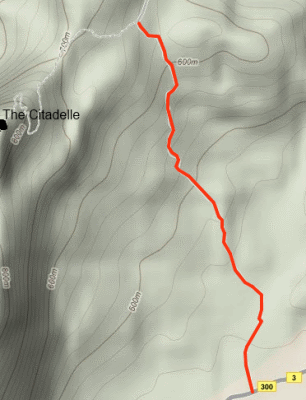

4. Furcy to Seguin - 14.2 miles. A fantastic pedestrian thoroughfare leads from Furcy to the remote mountain junction of Seguin (Marche?). Plenty of villages with food and drinks near the Furcy end. As the trail nears Seguin, it passes through a dense pine forest where mototaxis are available and there are few pedestrians. There is a lodge at the Furcy end which is very expensive; there may be more affordable options in Kenscoff. There is supposedly a lodge in Seguin but I was not able to find it. At Seguin, you can continue on to Mare Rouge and Pic de la Selle to the east, or you can go south to Depot and Marigot; mototaxis are available for both directions.
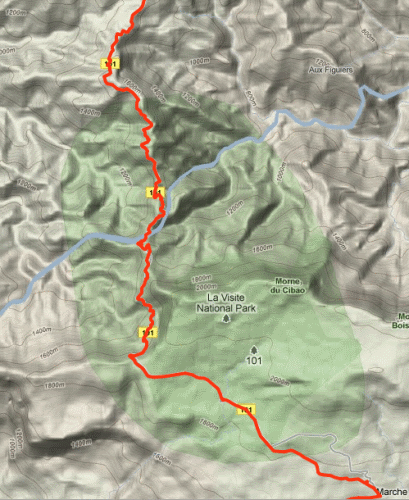

5. Seguin to Depot (Marigot) - 10 miles. This is actually the main road that connects the coast to the mountains; you can occasionally find a truck that plies the route, but usually you have to pay top dollar for a motorcycle taxi. It is much easier to walk south than north. There are many shortcuts and alternative trails that can be spotted from above and make for a fun break from the monotony of the road. From Depot, there are regular buses to Jacmel which cost about 50 gourdes.
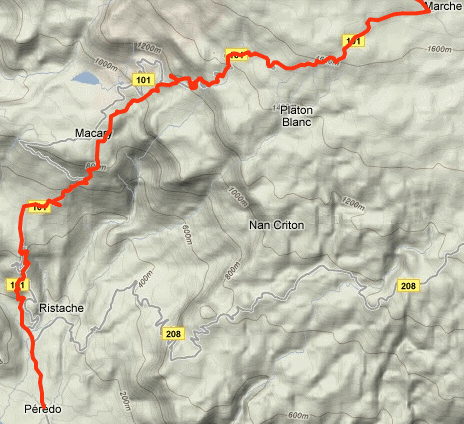

6. Bassins Bleu, Baguete Loop - 12.75 miles. From Rue Comedie in Jacmel, this route crosses a nasty river (mototaxi, horse or truck recommended), and follows a well signed road up a mountain to some really nice waterfalls that offer excellent swimming and cliff diving. There are also two trails that go up to the falls, but these are difficult to follow. From the falls, you can continue on along a series of trails to Baguete and then back along the beach to Jacmel. This route has many forks and some treacherous terrain, but is very scenic.
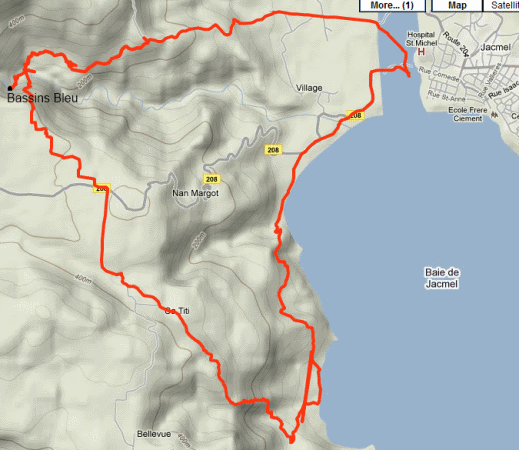


Ever since I had dropped in for a whirlwind tour over Thanksgiving '09 and experienced a remarkably beautiful country where tourists fear to tread, I had been looking for any excuse to get back to Haiti and do my part to piece it back together. Periodically, I would hear of OAR members heading down there with a church or medical group or construction crew, and a few Gainesville organizations would make intermittent, poorly planned trips to put up earthbag houses. One group, From Gainesville with Love (FGWL) was planning to do a spring break service trip to Jacmel, and had, after minimal consultation with me, concluded that I was going to assist in this effort by taking OAR down there and leading a eco-tourism trips. The problem was, of course, that Jacmel doesn't really have any documented outdoor activities, and, due to political instability, cholera, and unchecked crime, most everyone is pretty set on never setting foot on that side of Hispaniola. So, I concluded that I would have to go down there myself, find some trails, and do a sort of informal feasibility study on the whole idea. I talked to a member of the Jacmel chamber of commerce who told me the chamber would help with necessary arrangements, and the FGWL president believed he would likely be leading a group down around the time I had picked out, and, at any rate, could provide some information on the area. I went ahead and booked my tickets for a December 28th departure; it seemed that no one I knew was terribly keen on making the trip, and the FGWL folks, as it turned out wouldn't be headed down til the day before my return, so I would be going it alone.
After my cousin slid on some early Atlanta ice and deployed the airbags in her old truck, totaling it in the eyes of the insurance company, my uncle deemed the vehicle unsafe and gifted it to me. So I had a perfectly good means with which to get down to FLL and back, and Frank's grandma even offered to let me park it at her place. It would cost me around $90 in gas to drive myself, and it hardly seemed like the most eco-friendly option, and thus I decided to take another stab at finding transport alternatives in Florida.
Amtrak was going to cost $100 each way, and Greyhound was not far behind at $77, so I posted on Craigslist's ride board and arranged a ride for Monday night, ahead of my 7am Tuesday departure. Alex had a full car for the ride back up and was happy to give me a ride down for the bargain price of $25. After an hour or so of dutifully fulfilling my role as the sole passenger and providing stimulating conversation, I passed out and didn't wake up until we hit a bump strip some thirty minutes from the airport. Still mostly asleep, I couldn't think of a single thing to talk about, and could only chuckle nervously as Alex bounced from one side of the HOV lane to the other, managing in his periodic bouts of consciousness to avoid sliding into a semi and killing us both. We got to the terminal safely but I can't speak for his remaining leg to Miami.
I had a pleasant half-night's sleep in the check-in area of FLL before getting up at 5 to go through security and wait in Spirit's uber-congested departure lounge. Though our plane was sitting at the gate all morning, our flight was delayed for 2 hours. Unlike my last flight to Haiti, this one had plenty of white people, including a 15-strong Mennonite group; I decided to strike up a conversation with one member of this group. "So what are you doing in Haiti?" I began. After frantically conferring with several of his friends, he came up with the response "Building a church." "Where?" I asked. A few minutes of harried consultation followed and they came to the consensus that they were going somewhere about four hours from PAP, possibly out to a peninsula of some sort. More than with most destinations, everyone headed for Haiti has a story to tell, but those of the independent travelers are usually a fair bit more informative than anything you're likely to extract from the mindless drones of organized groups.
Half the airport had collapsed since the last time I flew into PAP, and immigration and customs had been temporarily moved to a warehouse at the far end of the complex. But someone had invested in a modern connector tunnel, so instead of just walking across the tarmac to where we needed to go, they had introduced a tight loop where we filed through the tunnel, down some stairs, past the requisite live band, and immediately back outside to board a shuttle which would take us 400 feet to the makeshift arrivals terminal. A disused Planet Airways 727 sat with its doors agape in a patch of high grass, lending itself nicely to the post-apocalyptic feel of the place. After baggage pickup, a long outdoor causeway led us back to the original entrance, a high fence protecting us from the rabble beyond.
I walked out to the main road, passing vast tent cities that had appeared since my last trip to the city. Despite the obvious implications of these set-ups, the tents, surrounding grounds, and sanitation systems appeared to be significantly better than much of the city's more permanent housing districts. The tap-taps have no signage of any kind, so I picked out a random one going south, hopped out at the terminus and caught another one going east into Petionville. Home to the upper echelon of Haitian society, many of the businesses and homes now lay in ruins, a large tent city filled the main square, and the streets were clogged with squalid markets. I took out 5000 gourdes from an ATM next to a half-collapsed bank; the machine itself stands in the open, on a grassy quadrangle filled with vagrants, but is one of only about five in the whole of the country.
I passed a sports car that had fallen into a giant crater in the road, and a raggedy Haitian man sporting a "Tail Gators" t-shirt, then found the right bus to take me up into the mountains, nearly beyond the reach of the putrefying tentacles that radiate out from the fallen capital. Many of the tap-taps in the area have a serious design flaw in that the exhaust from the engine feeds directly into the back passenger compartment; I opted to hop out in Fermanthe and make a quick jaunt up to Fort Jacques. Three kilometers up the mountain, the crumbling fort had become a popular hangout for local youths, and one group had rigged up a generator to power a sizeable stereo system for a dance party on the ramparts. Two men stood by the entrance (a large wooden door that had fallen off its hinges and was jury-rigged such that it would open wide enough to allow an average-sized Haitian to squeeze through) and demanded that I pay $2 to enter; it seemed doubtful that any of the young couples making out inside had paid this fee, or that any other foreigner had shown up here in the last several months. Who were these guys? Did they really stand here for 8 hours a day to collect money from nonexistent tourists? I spent 35 gourdes on a harrowing motorcycle taxi ride back down the bumpy mountain road, and hopped in another tap-tap bound for Kenscoff. There were several hotels here, and probably would've been a good place to stop for the night, given that it was now dusk, but I opted to continue further up to Furcy.
Furcy is about 2km off the main road, and so I got off and followed a couple locals down to their village. They said I could stay at a lodge up the road or somewhere in town, but my Creole wasn't all that spectacular, so I really had no idea where they intended to put me. When a few teenage guys told me in English that there was nowhere to stay in the village and I would need to return to the lodge half a mile before, I foolishly followed them into the darkness. Once off the main road, the kids repeatedly demanded money to take me to the lodge; had I thought about it a bit, I would've reasoned that they would never dare a mugging since their whole village had seen them leave with me, but there in the darkness with no one else around, the encounter was slightly unnerving. We talked to the gatekeepers at the lodge but they didn't seem keen on letting me stay there and were disinclined to call the property management, so we returned to the village, and the kids took me straight to where (as it turned out) I had been headed in the first place, the church rectory. There, the English-speaking pastor called up the lodge owners; a somewhat unaccommodating French and American couple, they were quite intent on getting $70 for a room in their lodge and hung up on me when I tried to negotiate the $40 rate mentioned in my guidebook. So it was decided that I would sleep on the couch in the rectory; I paid the two kids a buck each for their guide services and they promised to return in the morning. The pastor was French but had studied at Stanford and had served in Haiti for 36 years; in his younger days, he had walked up to 6 hours to reach remote parishes in the diocese; now he mostly just stayed local, delivered weekly Masses and did web design. He gave me soup jomou and bread for dinner, and showed me the indicator light that told whether we were getting our power from the city or from the battery rack in the corner. He gave me two comforters for the “frigid" 10 C nights.
Even though everyone went to bed at 8, no one was up before 7 in the morning. The elderly priest gave me a banana for the road and rejected my offers of a donation. I snuck out of the village quietly and successfully evaded my youthful "guides".
I followed a rocky trail alongside hundreds of Haitians, most of whom were carrying large bundles on their heads; one woman carried 4 full-grown turkeys in this way. A string of towns along the amazingly scenic ridgeline offered markets, stores, and food vendors. Since I had not been afflicted with the usual case of diarrhea that usually hits me the second I step foot in a third world country, and since I had a good ten hours of walking in front of me, I figured it was pretty important that I order sketch street food from a lady with a bunch of pots in the dirt on the side of the trail. For 75 gourdes, I got a big plate of fried spaghetti with mayo, ketchup, Texas Pete, bits of sausage, tomatoes, lettuce, and onions; I think I was supposed to get soup, an egg and some coffee as well, but these had been lost in translation. Just down the road, some guy on a motorcycle pulled up next to me, gave me an inquisitive look, and asked "Cholera?"; I nodded to indicate that I knew about cholera, and he repeated the word a few more times in various tones.
A little ways up the trail, the path was partially blocked by a large boulder which had fallen from the cliff above, and a couple of men stood atop it, hammering away with pickaxes. The trail followed a jagged series of peaks, dipping in and out of the clouds and providing some of the more spectacular views I've seen on a hike. At one point, the path flattened out and became a road on which motos could be driven and the pedestrian traffic dropped to a trickle. It soon entered a deep, dark pine forest, a true rarity in this country, and provided a very cool, peaceful walk into Seguin.
I believe the guidebook described Seguin as a picturesque mountain town, but like most of the bits of civilization I came across in Haiti, it was kind of a dump. I looked around for the advertised lodge, but found nothing; one guy took me to the church rectory, but the priest was teaching at the school. The road eastward to Mare Rouge, and to Pic de la Selle beyond, was heavily travelled, and it was very tempting to continue on through the mountains with no guarantee that I would have anywhere to stay that night or be supplied with the necessary cold weather gear to survive the colder climes. I eventually opted to do the responsible thing and head downhill to Marigot.
This was the same section of trail that we had attempted on my previous trip; from what I could tell from the landmarks, we had come very close to reaching Seguin that day, but it is not clear how wise it would have been to attempt the necessary night hike to reach our morning flight. This time around, I took many shortcuts to avoid the countless switchbacks on the road; I found one that went for miles through jungle, and forked in strange and unpredictable ways. I would periodically stop, point, and ask "Marigot?" to see if I was still heading in the right direction; initially everyone agreed, but these affirmations later turned to inquisitive looks and chuckles. I got back on the road and soon ran across a roadblock that local kids had set up to extract tolls from mototaxis headed up the mountain; luckily I was able to simply step over their makeshift barrier and was therefore allowed to pass for no charge.
I reached Depot around 4:30 and took a tap-tap into Marigot and onward to Jacmel. After about an hour and a half, it got a flat, and I opted to walk the rest of the way. Twenty minutes later, the same tap-tap pulled to a stop next to me; it hadn't seen me and was just dropping off the tire, but I hopped onboard and got a ride the rest of the way into the city.
Jacmel seemed to be roughly the same as before, though some of the buildings had collapsed and a tent city had been erected around the playground in the main city square. I got a cheese milkshake, which was every bit as delicious as the last time, and picked up an egg sandwich from an adjacent vendor. I looked around for a cheap hotel; a sketch guy at the internet cafe directed me to one that he said cost $20, but the price turned out to be closer to $60; a place down the street cost $19 but offered rooms that were essentially twin beds in hall closets, and had only a bucket shower. I ended up staying at the same place I had before for $28; the bathroom was home to a great number of malarial mosquitoes, which meant that my showers consisted of an awkward motion where I would spin continuously to insure that all parts of my body were consistently too wet for the deadly insects to land. Music blared at the club across the way until after 3, and was shortly thereafter supplanted by a 6am choir practice in the collapsed church next door. Hotels in Haiti are pretty uniformly terrible and ridiculously over-priced; everything else is pretty cheap, so it's really a pretty strange phenomenon.
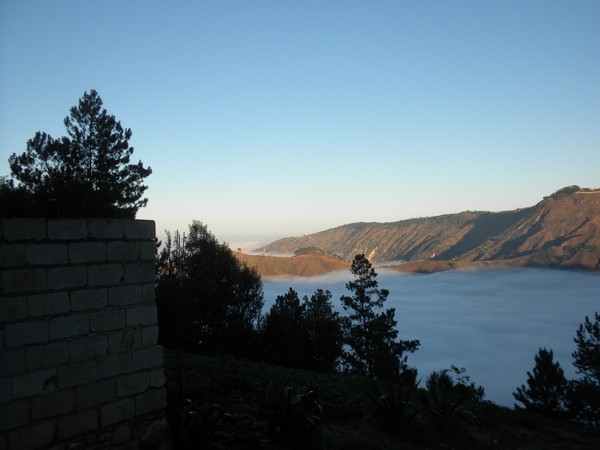
View from my first night's accommodation at Furcy's church rectory

Typical tap-tap
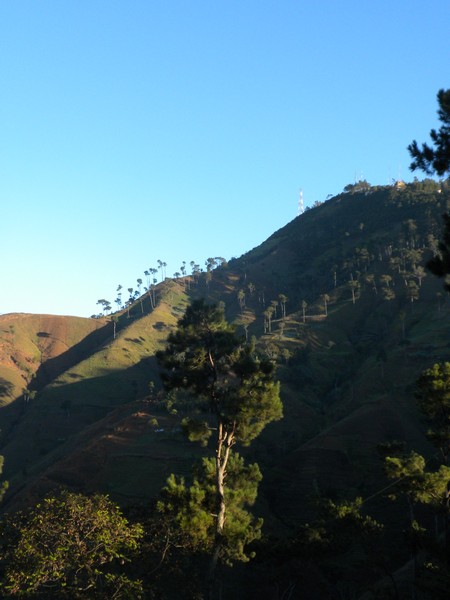
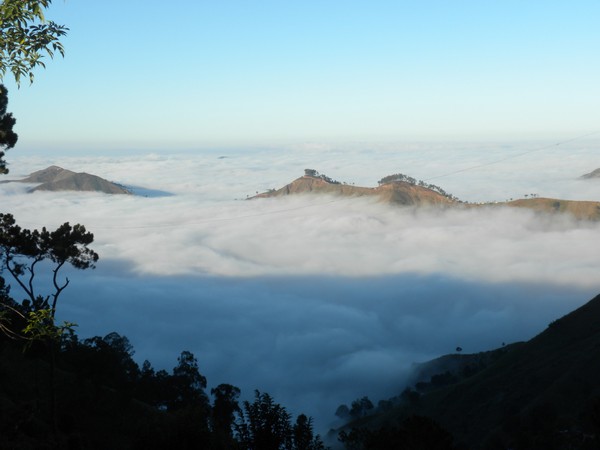

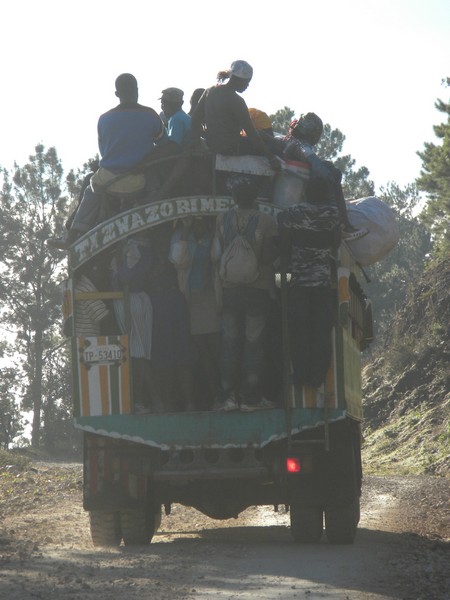
Always room for one more
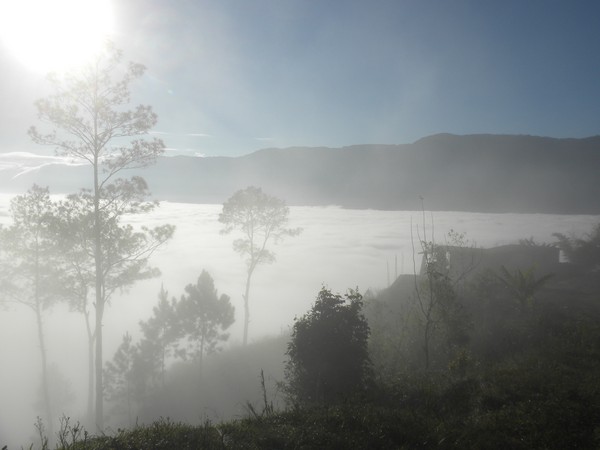
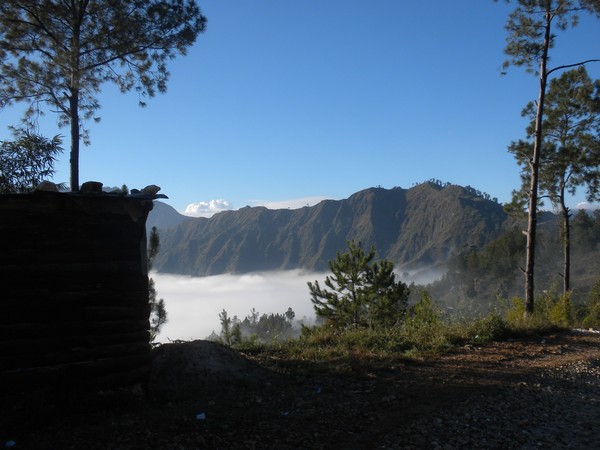
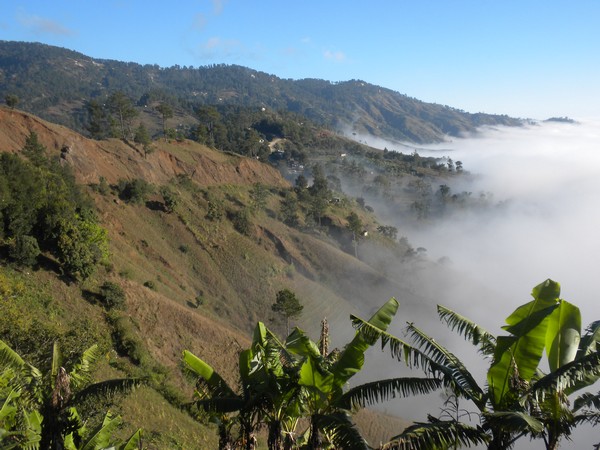

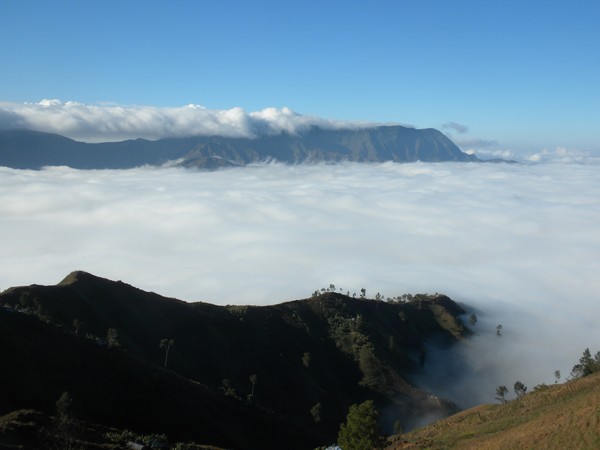
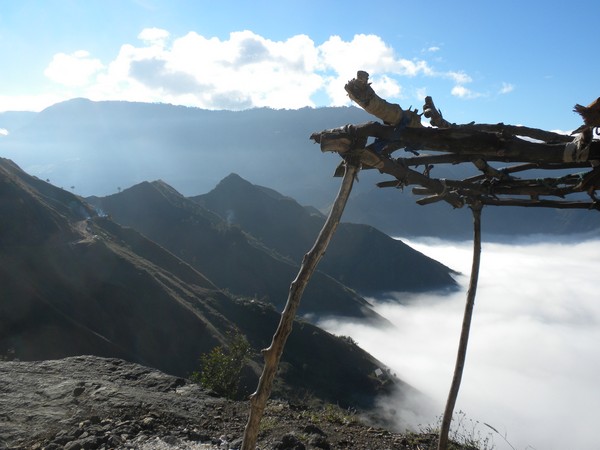
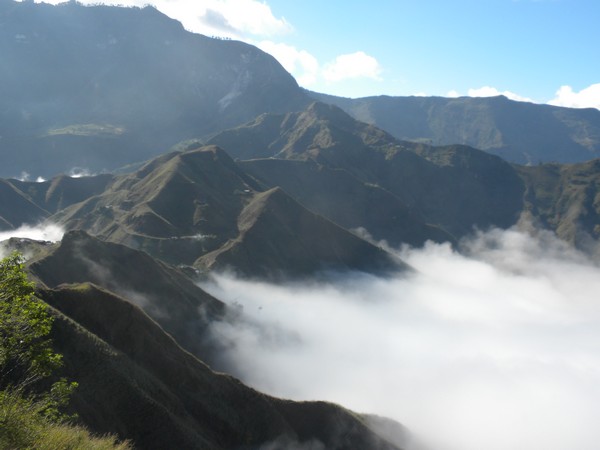
Trail to Seguin
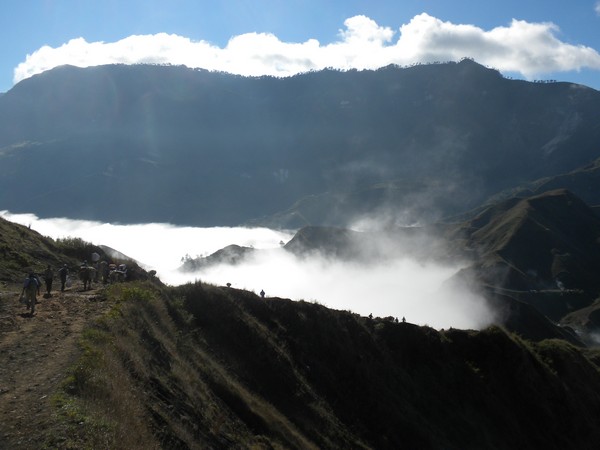
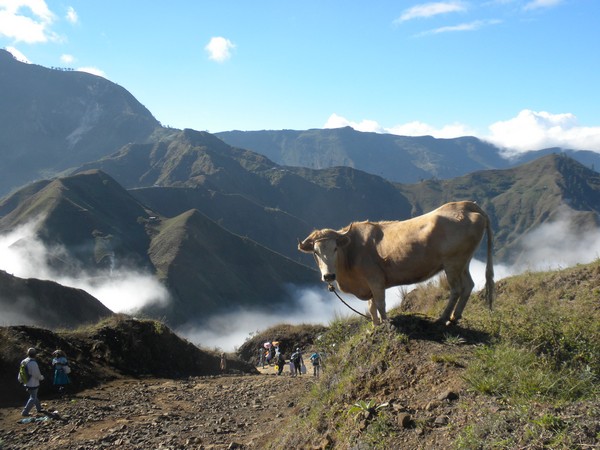
Full of diverse wildlife
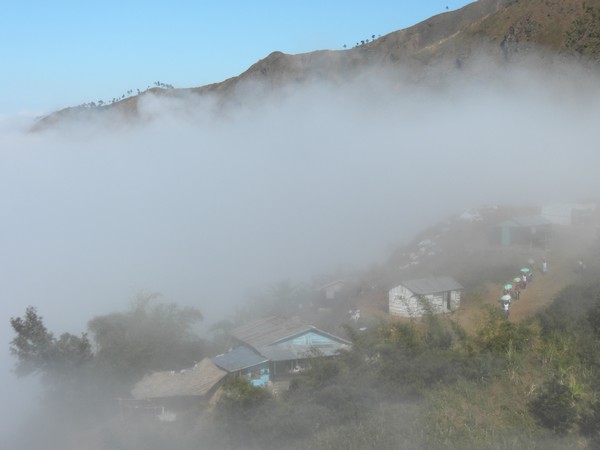
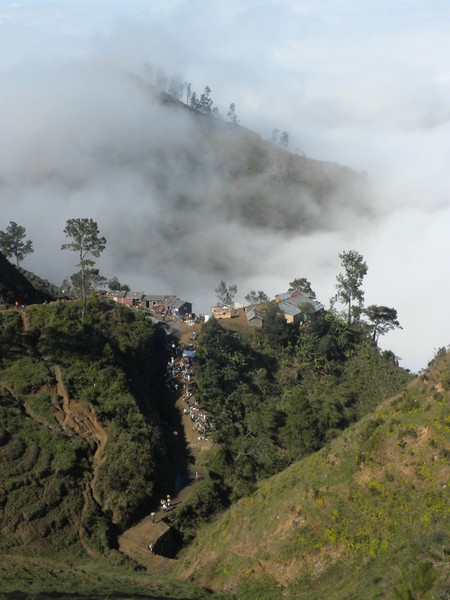
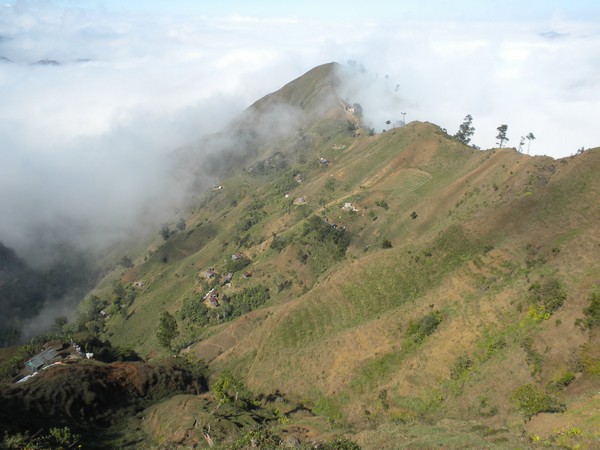
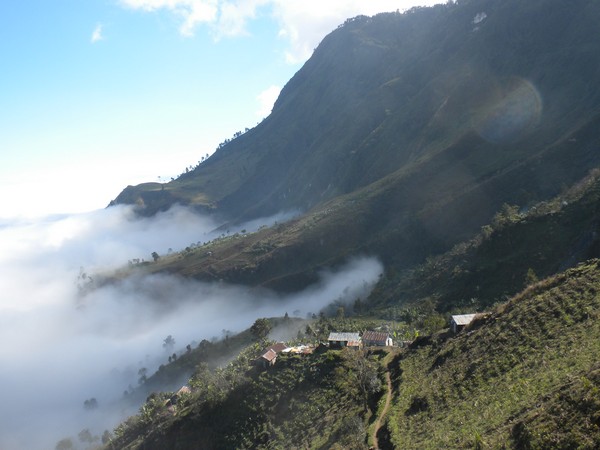
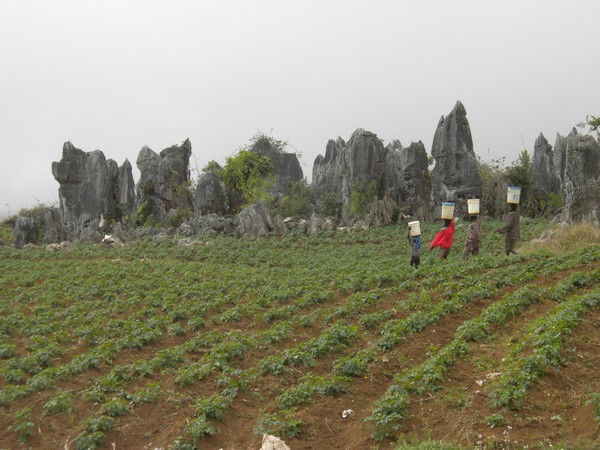
Rock gardens of Seguin
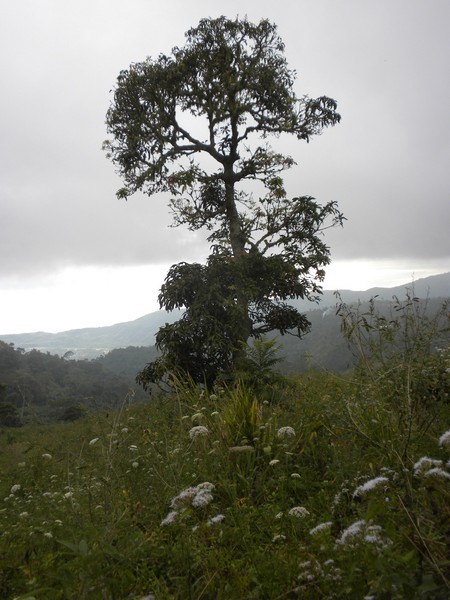
There are many ordinary everyday activities that are hard to pull off in a foreign language, but buying a phone plan probably ranks among the most challenging. There were signs all over the country for an unbelievable promotion where you could get an MP3-playing, mobile TV phone and a SIM card for 750 gourdes, but apparently that sale had ended and now the most basic model, as near as I could ascertain, was going to run me 1000 gourdes, with a SIM being a few hundred extra. How many minutes came with the plan, how much minutes would cost after that, and other questions that are typically central to your purchasing decision, would have to remain unanswered. In addition to the actual storefront shops, there are lots of guys with desks or glass boxes that sell phones on the streets; I'm not really sure how these operate, but I found one who would sell me a phone and SIM for 1000 even. I went with Digicel, but the other company, Voila, was apparently doing some sort of insane deal and a vicious mob of several hundred people were piled up around their store, waiting all day for it to open.
I had previously met one of the chamber of commerce members, Roland Zenny, in Gainesville and now gave him a call to see how he could help me. He instructed me to take a mototaxi to his place; the first guy charged me 25 gourdes to drop me across town at a motorcycle factory run by Edo Zenny, and I had to pay another 25 for another to take me back to Roland's water business which happened to be about a hundred feet from where I started. Zenny called up Michael Jean, who was listed in the guidebook as a wilderness guide (a very expensive one). He had all kinds of plans for hiking around the mountains, but at $30/day he would bankrupt me rather fast, and it seemed at least one of those days would most likely be hiking along roads to established tourist attractions; while we worked to come to some agreement on his fees, we attacked the more immediate need of finding a cheaper place for me to sleep. We went by an orphanage; he said it was likely that I could sleep there but I would need to discuss it with the management later in the evening. We stopped in at a few private homes and discount hotels that had no running water but could give me a room for only 500 gourdes a night. We even went to talk to Jean Pierre, a somewhat inebriated sort living on the beach, who agreed to let me sleep in a tent next to his shack for free. It seems that virtually everyone in and around Jacmel has a tent to loan out these days; no one was particularly keen to sleep in their houses after the quake. We went on a prolonged search to find the Association of Touristic Micro-Enterprises, but like many of the businesses and organizations that were once housed in Jacmel's historic downtown, this one had vanished without a trace, and none of the dozen or so people we asked (including those living and working at the association's former address) had any memory of it whatsoever.
Unable to reach an acceptable compromise for a daily charge, I paid Michael Jean 150 gourdes and took off for Baissins Bleu on my own. The road up into the mountains is interrupted by a large, shallow river, and, despite the fact that it's not navigable and thousands of people cross it every day, they have yet to build a bridge spanning it; the options are to rent a motorcycle, hop in a passing truck, or take off your shoes, hike up your pants, and wade through the stinking, garbage-filled, parasite-ridden waters. Just before the river, an English-speaking taxi driver convinced me that the way to the falls was extremely convoluted and I would need a guide to negotiate it. He told his friend, Ramon, to accompany me; Ramon spoke zero English and seemed extremely peeved that he had to hike up a mountain when he had a perfectly good motorcycle at the bottom. We followed an extremely well-signed, steep road for 1.5 hours up to the falls, where I was forced to accept a local guide to take me to the falls themselves. Despite my rapidly progressing Creole skills, Ramon didn't say 5 words to me the whole time; once we reached the entrance to the falls, Ramon asked to be excused and I paid him a slightly reduced fee of 150 gourdes, which he accepted without comment. The new guide was extremely friendly and spoke excellent English; his name sounded vaguely Arabic, but was very difficult to pronounce or remember, and though I spent multiple days with him and asked him to repeat it several times, I'm still not sure what it was; for the purposes of this story, we'll call him Safaraz.
He took me to the three sets of falls; the third supposedly required a rope to reach and I had to rent one from some random guy for 50 gourdes. We swam across the final basin and clambered up a rock wall to reach a small cave, and then, using indentations in the rock which were a bit too shallow and slippery for comfort, we climbed up through the waterfall and jumped from a ledge up above. Along the route to the falls, we met two French guys who Safaraz knew from before; hearing about my lack of cheap accommodation options, they offered to let me stay in a tent at their friend's house on the coast. Safaraz had also offered up a place nearby, so I resolved to stay in the mountains that night before returning to the beach for New Year's Eve.
We went back up the road to Baba's house; Baba was a friend of Safaraz who did veterinary work for a livestock program administered by a Catholic church from Orlando. He was in the process of building an addition to his house for tourists, complete with a shower and flushing toilet, but at the moment, was able to offer me a very comfortable bed in a private room; this was presumably his, as he and his wife and the rest of his large family seemed to be sleeping on cots in the living room. Though Safaraz had offered to show me how to make chocolate out of cacao, we spent several hours not doing or saying much of anything while we waited for dinner to be prepared; things seem to move at a slower pace in the mountains. I had a long chat with Baba about a school he had recently started for around fifty of the area's children; he was currently conducting classes in a half-completed church building with no walls or roof and had an all-volunteer staff; I offered that I would ask around to try to find him funding for a dedicated school building and tuition for the area's impoverished families, most of which could not afford to pay even the meager 100 gourdes/month he was currently asking. After about three hours of cooking, when I was about ready to pass out, the women of the household called me into the dining room where they had set up an elaborate spread of chicken, patacones, salad, boiled plantains, and sauce; available to drink were two bottles of Coca Cola and a large bottle of something called ‘Ken's Special Punch'. Mine was the only place setting, and so I found myself eating a candlelight dinner by myself, with only the tinny melody of a snow globe to keep me company; the rest of the family presumably had their own food, but they had opted to eat elsewhere. I ate until I could eat no more, thanked the womenfolk, and promptly retired to my room. Someone brought me a chamber pot and explained its use; this seemed a tad unnecessary since there was a perfectly good toilet a hundred feet from my room.
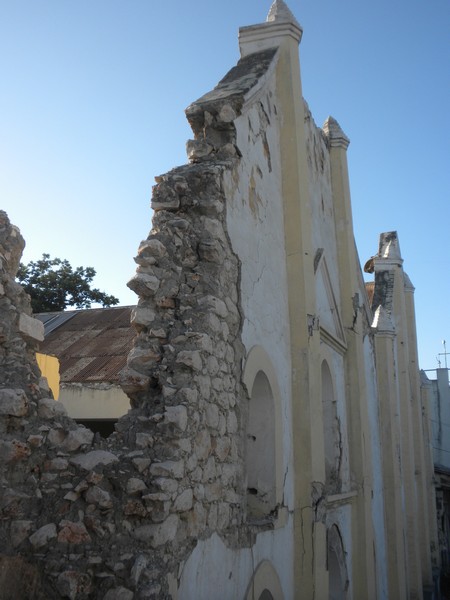
What remains of Jacmel's Seventh Day Adventist church. And they still hold choir practice at 6 in the morning!

Trail to Bassins Bleu
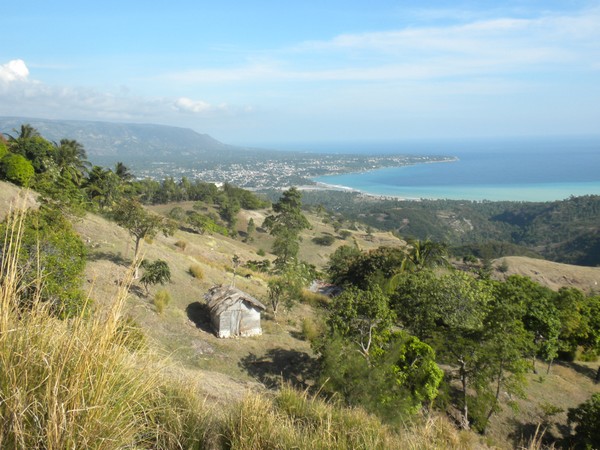
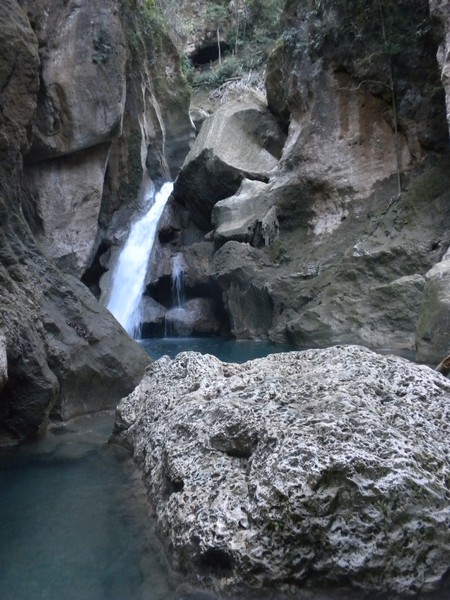
Top waterfall

Dinner fit for a king - only took 3 hours
Baba's wife offered to make me breakfast in the morning; I wasn't really hungry and was ready to get on the trail before the sun got too high in the sky, but wasn't in much of a position to refuse. While I waited, a crazy neighbor dropped by to rant about various things; he wore a warm-up suit from the Naples Varsity Cheerleading Squad, which he had stuffed full of plastic bags. Two hours later, breakfast was ready; with an amazing spread of sausage, onions, plantains and sauce, coffee, and spaghetti, it was enough to rival the immense dinner I had polished off just hours before.
By the time I had finished eating, the cooling wind had died down and the sun was baking the exposed mountainside. Safaraz, his friend, and I set out on a rather vertical trail, bound for Baguete. The long-legged, packless Haitians, who made the long hike into town on average twice a day, sprinted ahead; they needed no water breaks and I never once saw them eat; we hiked up and over the ridge and then down to Baba's sister's house. Here, one of the two scaled a palm tree and fetched a couple of green coconuts, and hacked into each with a machete so we could drink the sweet liquid within. The next segment of trail was a treacherous goat path; I slipped and tripped down the steep grade while the sure-footed Haitians danced along it effortlessly, yelling back "careful" in response to my every blunder. At the beach, we came across a boatload of fishermen who were just unloading their catch. Among other things, they had a bucket full of lionfish and were in the process of removing their spines. We followed the beach until we reached a rocky headland and took a trail up and over. A series of stream crossings necessitated that I walk barefoot through long stretches of contaminated water; if I were to do it again, I would probably just grab a mototaxi and thus avoid the nagging question of whether microscopic worms had just burrowed through my skin.
Back in town, we went to visit Congo Plage which is apparently a hip party spot for Jacmelites; on the way, we were stopped at a cordon that had been set up to collect tolls for walking on a neighborhood street; this seemed a bit ridiculous, but it was admittedly a lot cleaner than any of the surrounding streets. More than the elevation gains, the relentless sun was sapping me of my energy, and I scoured the town looking for a hat, but was thwarted in my efforts by the fact that my head was a good 50% larger than the biggest in those parts. I took a tap-tap out to Cyvadier Plage to camp with the French. I followed the directions I had been given and arrived at a half-finished house, fashioned from cement and large, ornate shells, and found one of the French guys sitting next to the water, strumming his guitar. He was on his way to a party and he expressed doubt that anyone would be staying there that night. For my part, I was way too tired for any parties, so I watched the sunset, went to a resto-bar to get some cold chicken and plantains leftover from lunch, and soon after passed out in a tent that had been set up inside the house. I woke up just before midnight and listened to the fireworks and shouts from the city some five miles away; I gave a quiet hoorah, wrapped myself in my space blanket to ward off the nighttime chill, and went back to sleep.
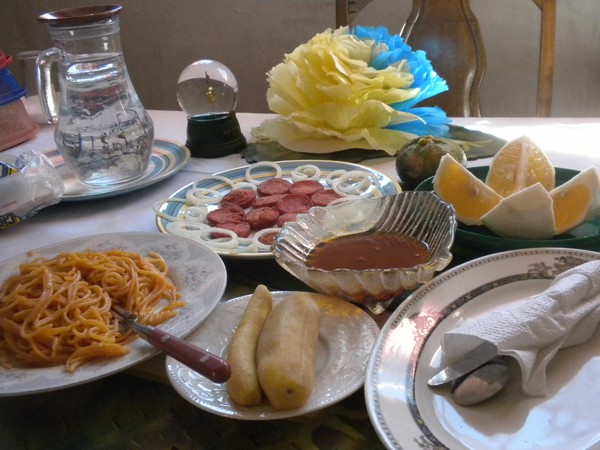
Much anticipated breakfast
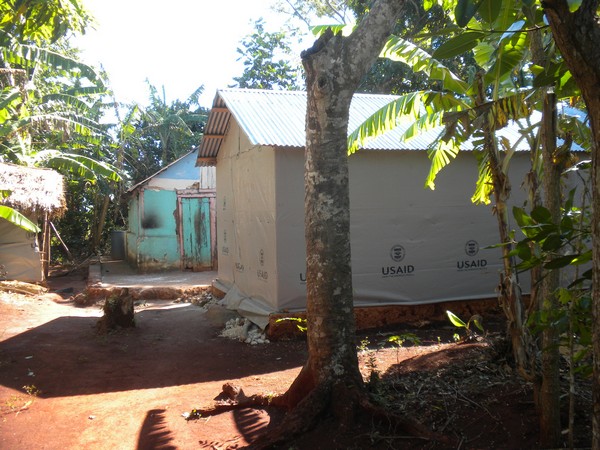
USAid: "From the American People" - free house with a touch of brainwashing
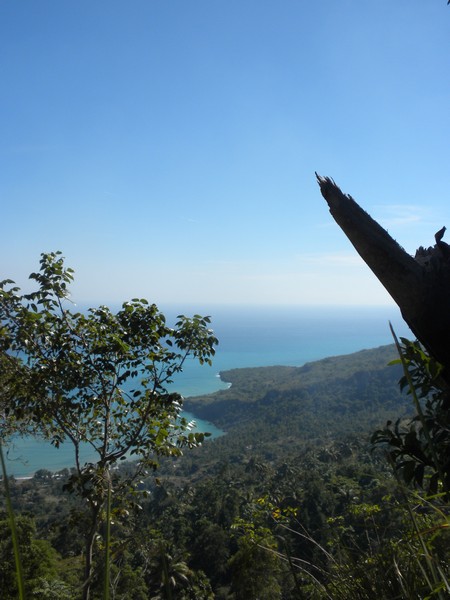
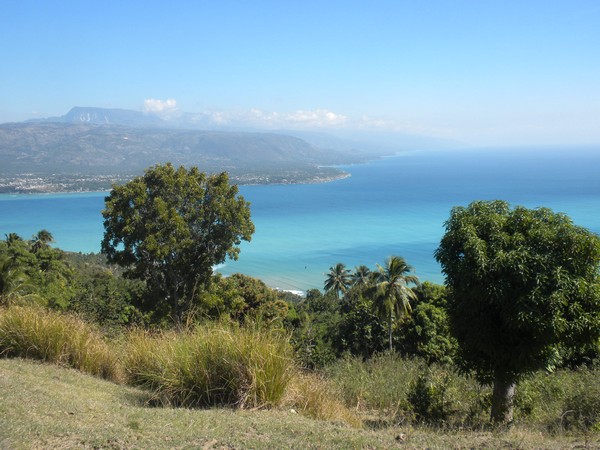
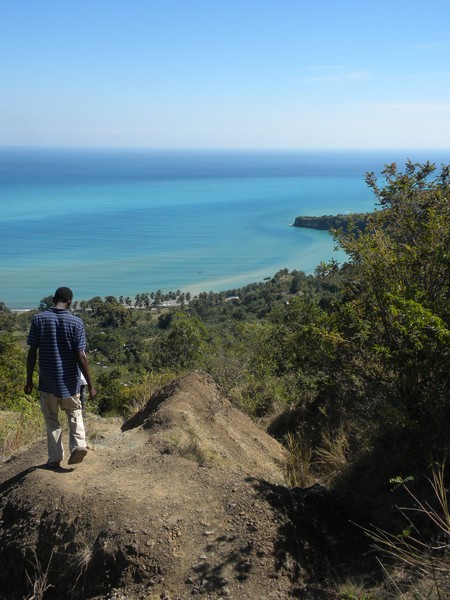
Trail to Baguete
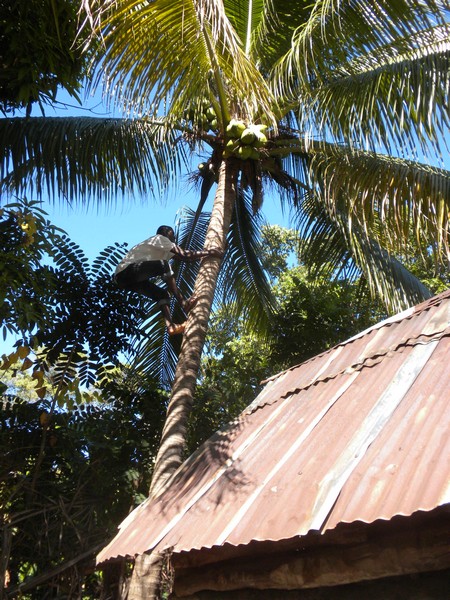
Fetching coconuts
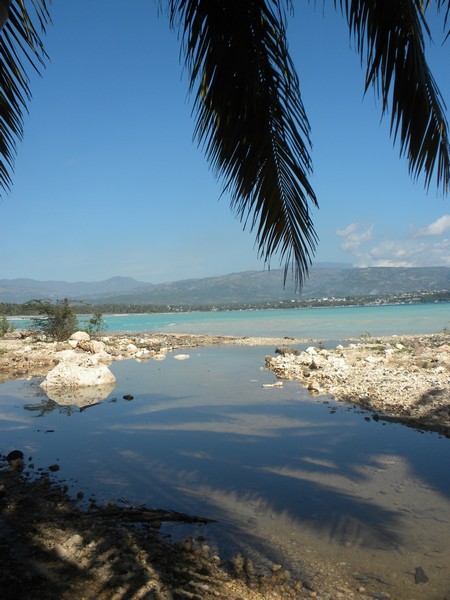
The Caribbean Sea
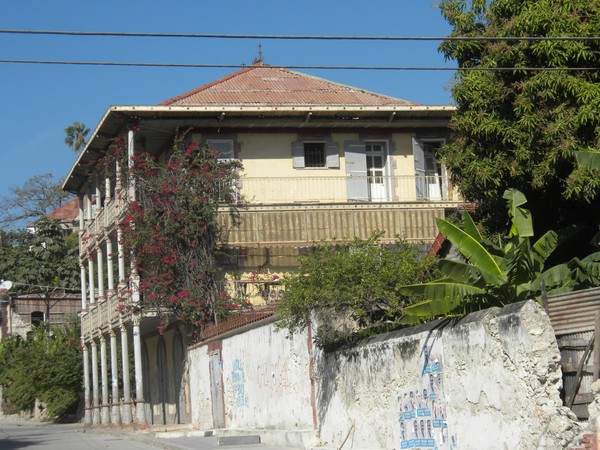
Grand ol' Jacmel
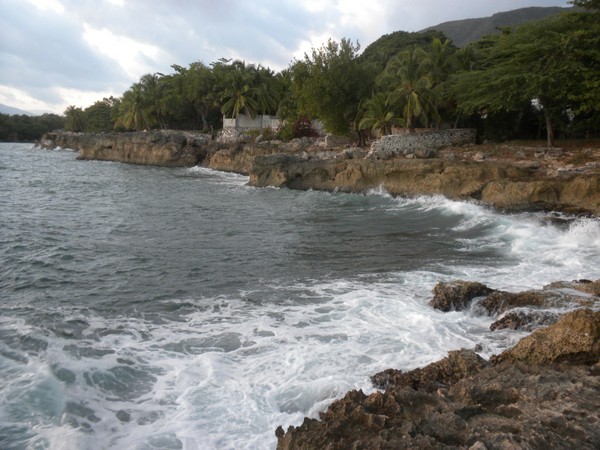
Second night's beachside camping
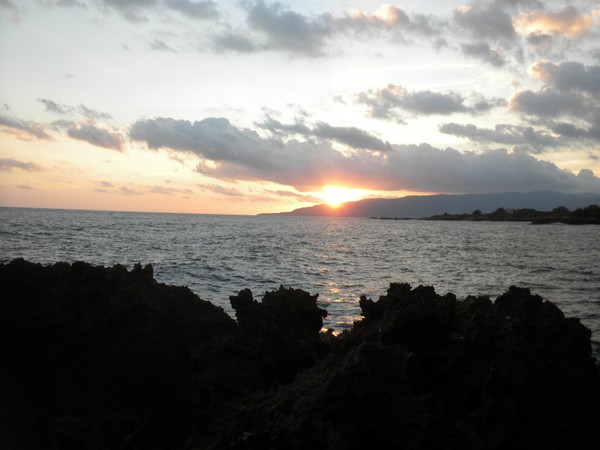
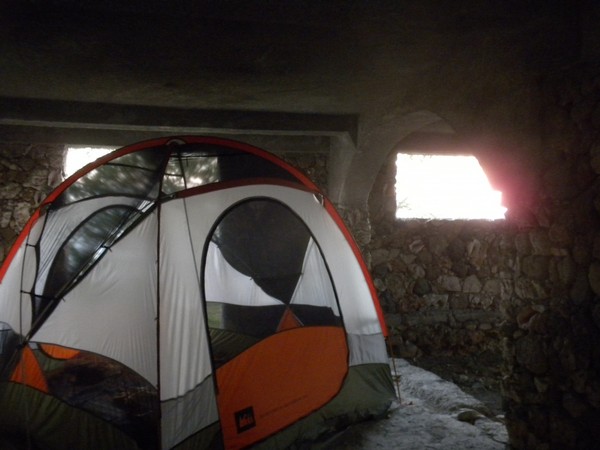
Unusual tenting spot
I met Papooch at 5 in the morning. He came into the house, announcing himself loudly, yanking me abruptly into a disquieted consciousness. I spoke frantically in a mix of French and Creole and tried to explain how I had come to be there and, at the same time, to ascertain who exactly this guy was and whether he was planning to kill me. It turned out he was a neighbor of whoever it was that owned the house I was sleeping in; I found I had remarkably little to explain myself and how I came to be there. But after a few minutes of stammering ‘mwen pa comprend', he reassured me with ‘pa pwoblem' and took off for his own abode. Five minutes later, as I was just beginning to doze off again, he once again appeared in front of my tent, asking if I wanted food or coffee; I explained that it was still a bit early and I would join him for breakfast in the morning.
I got up an hour or two later and watched the sunrise. I looked around for Papooch, but eventually surmised that he would probably be sleeping off the night's events for some time still, and so I returned to the road and caught a bus east to Marigot in hopes of finding onward transport to Belle Anse.
Despite what most maps seem to show, there is no coastal road beyond Marigot and the only way to get to Belle Anse is to ascend up into the mountains, and the only way to do that, aside from several hours of tiring uphill slog, is to pay top dollar for a mototaxi. The lowest price I could get from any mototaxi driver to get up to Seguin was 500 gourdes, but since everyone and their mother uses mototaxis for this route, I imagine the normal price must be a good deal cheaper, and one person I talked to suggested that he thought it was more like 250. But since I couldn't talk anyone down and since there didn't seem to be any tap-taps anywhere in the mountains and I would have to take mototaxis or walk the entire way, and since I would have no guarantee of finding a place to stay or getting a reasonable price, and given that I only had about $30 to my name and no way of getting more cash, I had no choice but to hop on another tap-tap and return to Jacmel.
Once back in the city, I discovered that I really had a very limited selection of ways to spend the day; I could either walk up a mountain somewhere, or I could hang out in Jacmel. My legs were nearly out of commission and I was very much averse to sitting around inhaling the diesel fumes and trash fire smoke that permeated every corner of the city. Every moment I delayed was another moment that the pitiless sun was beating down on me, burning my pale white skin to a crisp, and the nearest shade was fifty miles away on the other side of an international border.
I happened to walk past the Port au Prince station and there happened to be an express minibus leaving in the next three minutes, and without all that much thought about what I was doing, and what implications it might have on my work in Jacmel, I hopped onboard and was shortly speeding through the mountains en route back to the capital. On the way into PAP, the tap-tap in front of us had two teenagers in rollerblades hanging on to its back rail; given that they couldn't have been going much under 60kph and it likely wasn't the smoothest of roads, this seemed a pretty ballsy proposition.
The Malpasse buses had moved around a bit since my book was published, and no one had the slightest inkling as to where they had gone. But by wandering aimlessly through the maze of unmarked streets, through chaotic markets, over rivers of sewage and past towering piles of smoldering trash, and asking half the people I passed along the way, I eventually found a bus for Croix des Boquete, where I could change for Malpasse. I squeezed into a colorful tap-tap and rode out to the suburbs; it seemed I was the only one who didn't know all the words to the pop songs blasted from the souped-up stereo. As with most buses in the country, half the people on this one carried a live chicken; where in other developing countries, a machete is the accessory of choice, and is the constant companion of nearly every person you meet, regardless of his/her occupation, in Haiti it is a chicken. Once at the crossroads, I waited on a curb for a good half hour before a bus arrived and I could squeeze on with the fifty other people who magically materialized. My seat consisted of the space between two seats; my butt was just big enough to span the void. I couldn't see much past the piles of people to either side of me, but the map suggested we were passing through a very scenic valley; for the first half of the trip, the road was paved and we made remarkably fast progress; for the second half, we were fording a shallow section of a large inland sea. Given that there weren't a great deal of foreigners that took this bus, the driver went straight past Haitian immigration to the border; so, at the request of a few Dominican guys with guns, I returned and got my exit stamp. The official asked me whether I were with an aid organization, and when I responded in the affirmative, opted not to hit me with any arbitrary exit taxes. On the DR side, the customs agents charged me $10 for a tourist permit, and, when I attempted to enter the country with just that, the guard forced me to return and pay a $20 exit tax.
Described as a "dusty border town" in the guidebook, Jimani seemed like just about the most beautiful place I had ever seen. It had a park with trees, electric lights, and no garbage piles in sight. It was New Years Day and there were street parties throughout the city. Hotel Jimani had the only open restaurant in town, and so for 200 pesos, I got some of the tastiest steak and patacones I've yet found in Latin America. The bus for Santo Domingo left at 1am and I had some 5 hours to kill. I went on a long, fruitless search for an Internet café; it seemed as if no one in town knew of the concept, not even the people with a sign reading ‘Internet aqui' nailed to a tree in their front yard. All the ice cream shops were closed as well, and this was profoundly disappointing, as ice cream was at least half the reason I had crossed the border in the first place. There was no shortage of beer, however; at least every fifty feet, there was a vendor who would sell you a bottle, regardless of your age, and since there seemed to be zero open container laws in effect, you could take it to go.
I sat on a bench in the park to people-watch. Dominican children booty danced in the main pavilion; the moves that are second nature to every 8-year-old here go far beyond what you'd see in most Gainesville clubs. Teenagers raced their motorcycles in tight circles around the pavilion, while agitated parents chewed them out for their recklessness. A random Dominican girl walked up and drilled me with questions about how I had come to be there. Five minutes later, a Swiss couple, who had spotted my white skin from the next block over, came by and invited me out for drinks. We went to the nearest party and ordered a few beers. The girlfriend, who had been born in Jimani, proceeded to try to set me up with all of her cousins and friends, and had me exchange Facebook details and phone numbers with each of them. After a few hours of these awkward encounters, I escaped to sleep on the bus.
I slept through most of the four-hour ride, only waking in response to revelers banging on my window whenever we passed through another in an endless series of rollicking New Year's parties. The bus seats were nearly wide enough for 1.5 people with no legroom, so I shortly found myself spooning with my seatmate. We arrived on the outskirts of the capital a full two hours before sunrise on a Sunday morning.
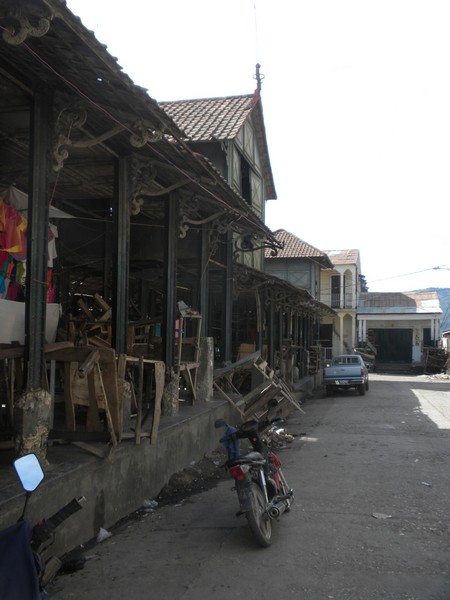
Jacmel's Marche du Fer

Dominican border town on New Years
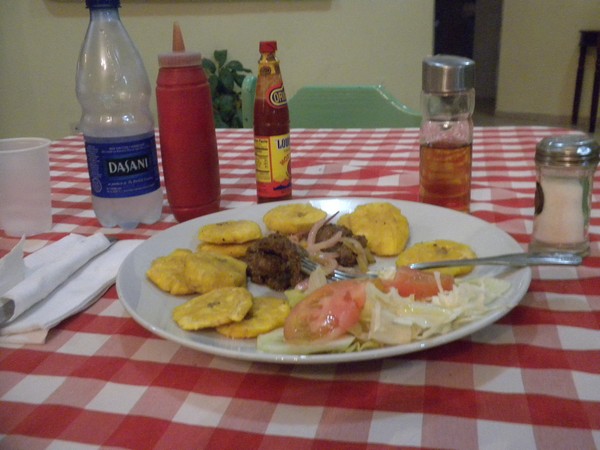
Dominican hotel fare
Since many were recovering from the non-stop partying of the previous week, the streets were particularly quiet, and the walk to the colonial zone a few miles south was uneventful. I sat on a stoop to await the sun, then checked into a hotel; the light in my room didn't work, but with plentiful electricity, AC, satellite TV, a hot shower, and clean sheets, it was worlds beyond anything you could find in Haiti, and, at $35, was competitively priced. I went to an early morning Mass, and pondered whether it was more or less comprehensible than its Creole equivalent would have been. Two walking tours took me through a long series of shuttered streets, to a number of historical and cultural attractions that had taken the day off. I walked for several miles to the east, through some of the city's less polished neighborhoods, to seek out the famed Columbus Lighthouse, but that too was closed. None of the Dominican restaurants were open, so my dining options were limited to fried chicken, Chinese and Creole; I found a woman selling Haitian food out of buckets in the same style that you would see across the border.
I retraced my steps to the center and made my way to the west to seek out a public park riddled with caves. The predominating car culture of the DR means that most roads tend to be fairly boring; a constant debate running through my mind was whether to take the time to figure out the bus system, or stick it out and walk the rest of the way; after many miles with not a single interesting sight, I concluded that the buses were probably the way to go. At the park, hundreds of people cycled and rollerbladed down the adjoining streets that were closed off each evening for that purpose; a giant playground, which included giant posts for playing human tether ball and lots of ice cream vendors, seemed to be a hot spot for goofing off on this, the last in a long series of holidays. On every backstreet, an intense game of Dominos was in progress and you could hear the slamming of the pieces from half a mile away. I took a bus back to the main pedestrian drag, which was lacking in street performers or anything else of much interest, and quickly returned to my hotel to crank up the AC and try my hand at getting a decent night of sleep.
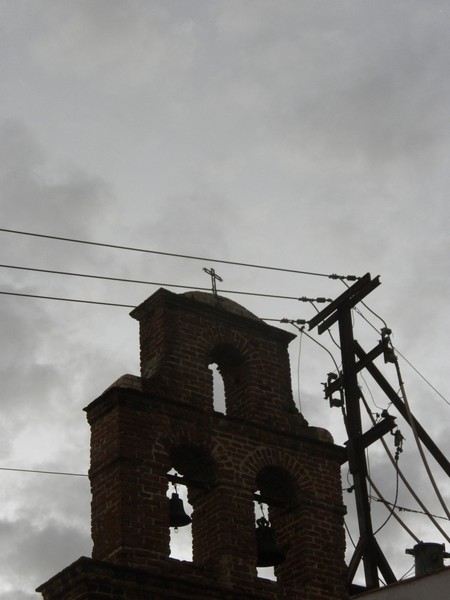
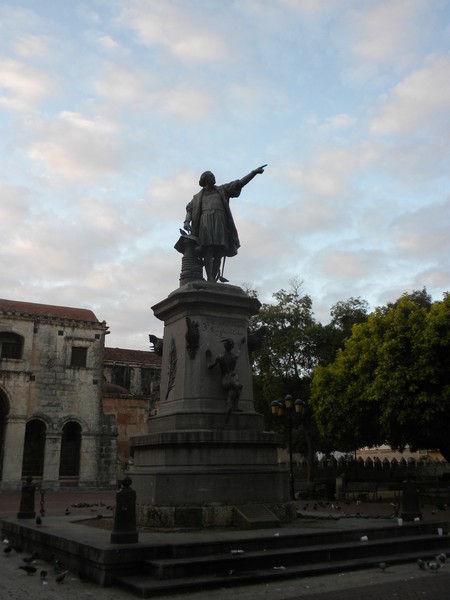
Santo Domingo
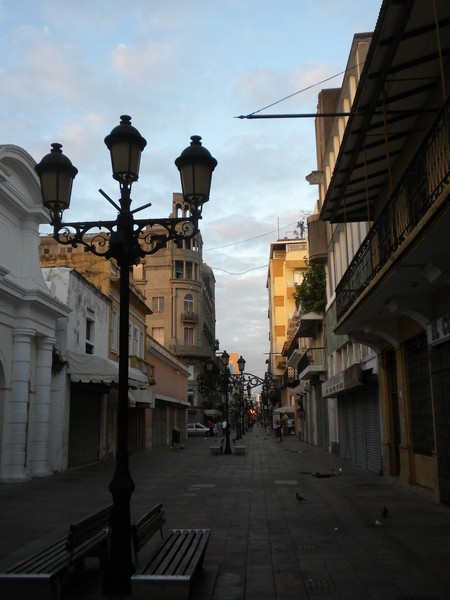
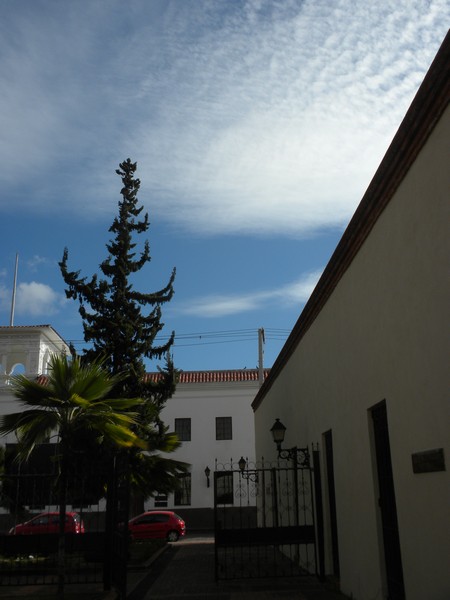
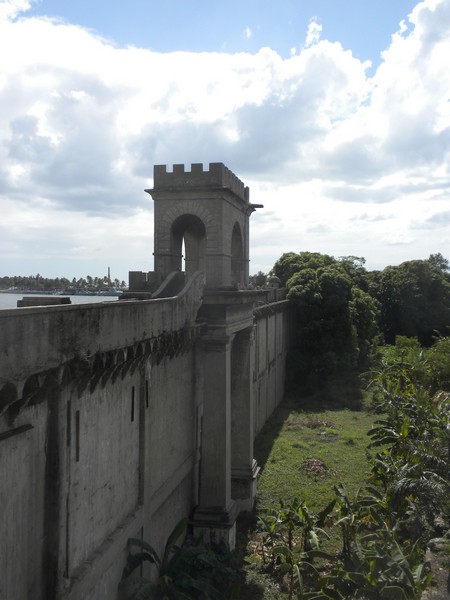
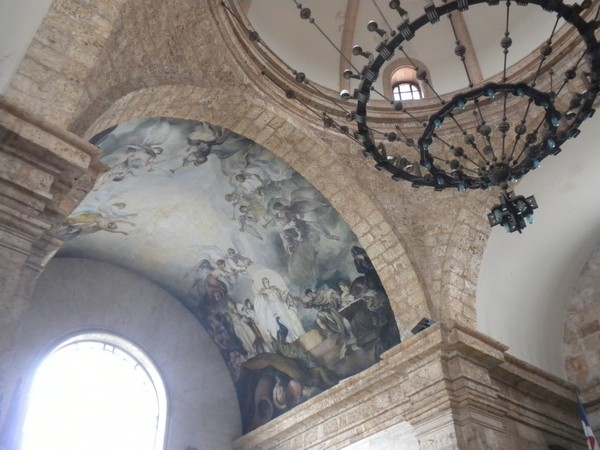
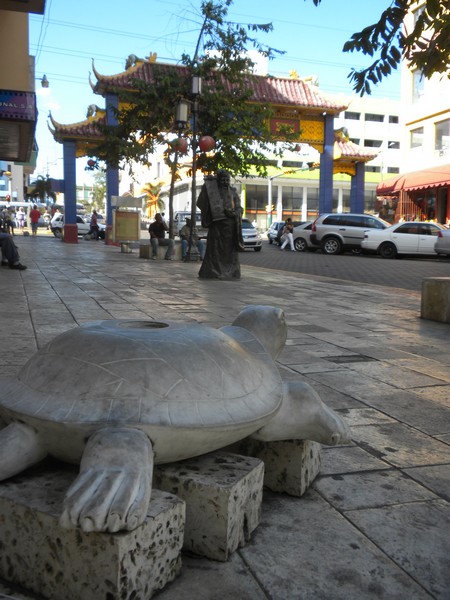
Turtles and wisemen in Chinatown
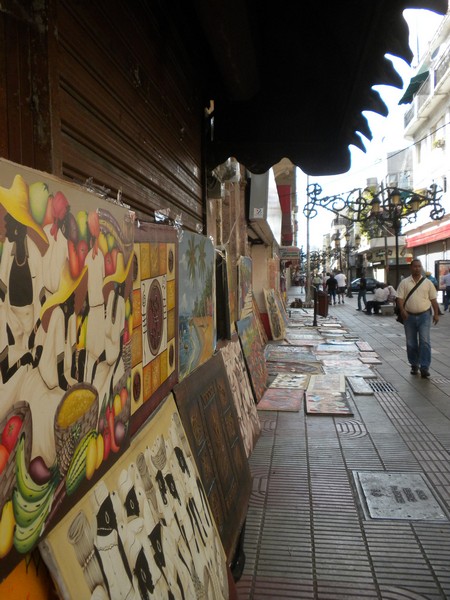
Dominican street art
I took a bus to Santiago, perused that town for a bit, ate some tasty street food, and then found onward transport to Monte Christi. It was hard to resist the lure of the 27 waterfalls of Damajagua, where you can spend hours climbing up the falls and subsequently jumping into one deep blue pool after another, but it was already late in the morning and the cruise ship passengers would surely already have arrived. Getting off the bus in the colorful fishing village of Monte Christi, I walked in the direction of the hill and passed through a more authentic patch of Dominican life. Unpaved roads led through rows of colorful shacks; in one street, a group of children played baseball, their only equipment was a PVC pipe and tennis ball, but they had two complete teams and followed the rules to the letter; in another street, a 300lb sow sauntered along, picking at discarded trash in the gutters. On many front porches, an intense game of dominos was under way; the ring of each piece as it was slammed against the table could be heard from half a mile away. At one point, a woman stopped me to ask where I was going, and redirect me to the nicely paved highway which would actually take me to my destination.
Shortly after reaching the main road, a man on a motorcycle stopped and asked me if I needed a ride; he explained that he was a marine (and even showed me his marine card), and took me to the coast for free. The trail to the top was extremely steep and treacherous; the stairs that had once provided easy access were now little more than intermittent piles of splinters and rusty nails. I reached the top and could find no view, but was informed upon my return to the road, that, had I ventured a little further back through the woods on a rough trail, I could have beheld a dramatic cove, formed from a volcanic crater, which was filled with circling sharks. I had met a guy from Miami on the trail who offered to give me a ride back into town; I looked with some degree of skepticism at his two friends and one motorcycle, but they ran a quick shuttle to get us all back. We went to a fried chicken place and got several boxes of chicken fingers and French fries; judging from the sheer number of pica de pollo joints, and the crowds that patronize them, this seems to be more or less all that Dominicans eat.
The American had been raised in Dajabon and was staying there for his holiday, and so he accompanied me on the bus to that border town. He took me to his "hood" to show me around. According to his account, he was something of a baseball legend in these parts, and indeed it seemed that everyone we passed knew him well and stopped us for a chat. We went to a pharmacy where his friend gave us a few shots of a traditional drink made from rum and something that strongly resembled potpourri.
The power had gone out, so generators whirred busily throughout the city and, for the most part, it was business as usual. I got a delicious papaya batida for 50 pesos and a strawberry fruit bar for 5. I found a hotel in the middle of town for 400 pesos; it had no AC, but was pretty satisfactory for $10. The fan was ridiculously loud but was the only thing that dissuaded the room's one persistent mosquito from buzzing around my face, and so I spent hours oscillating between these two evils before finally breaking down and setting up the mosquito net.
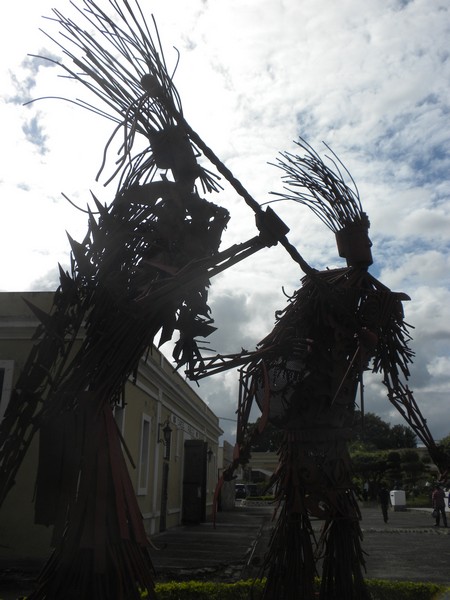
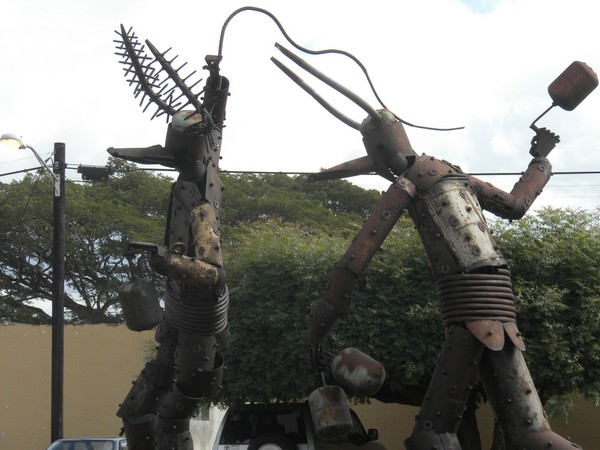
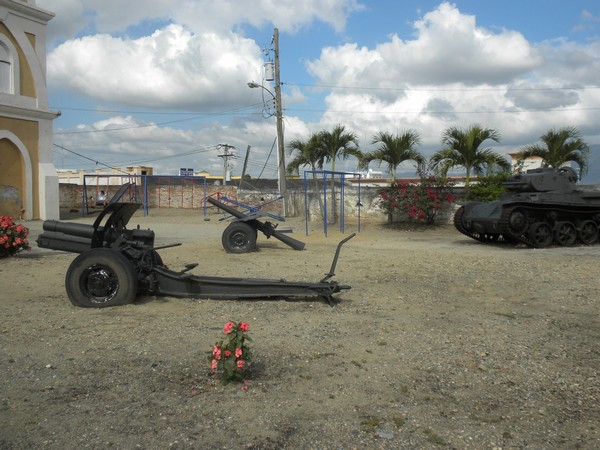
Flowers, swingsets and artillery
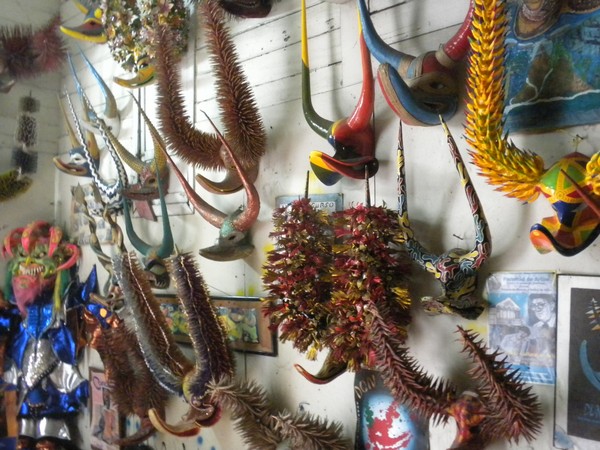
Carnival masks
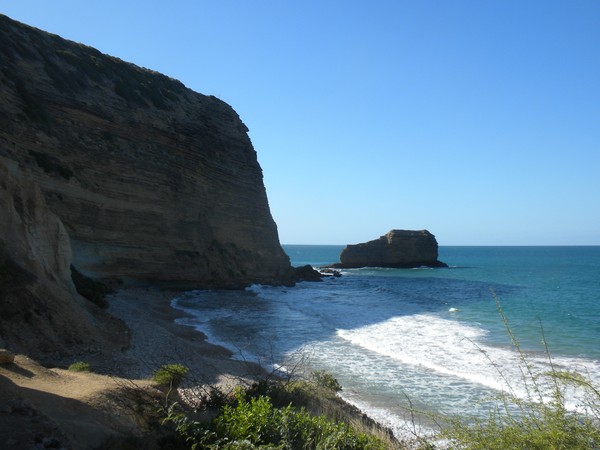
El Morro
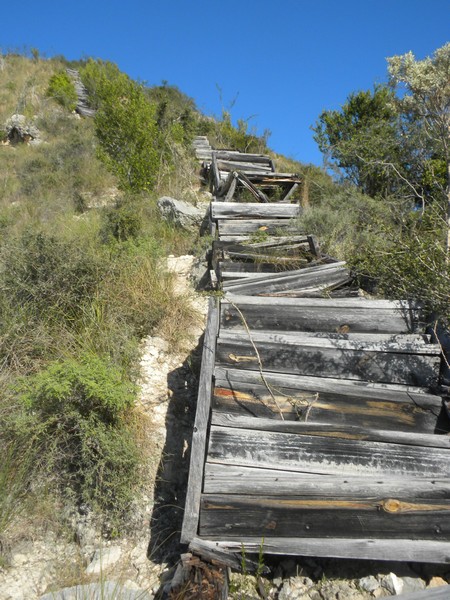
Sketch staircase

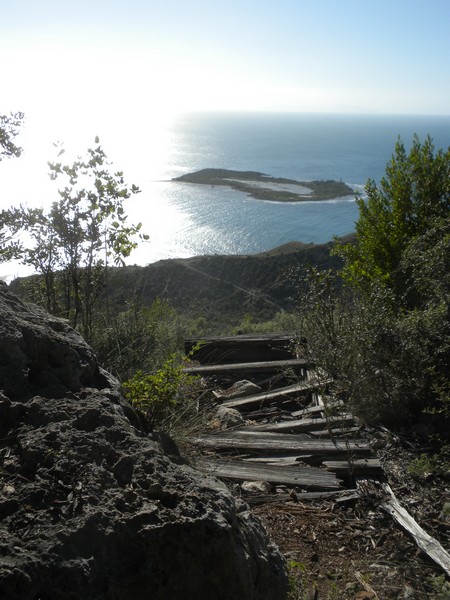
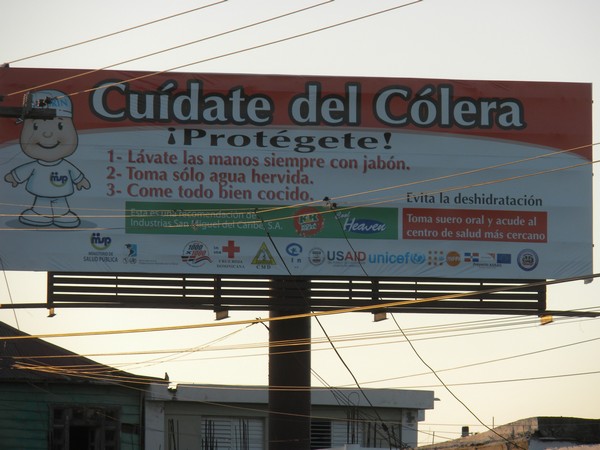
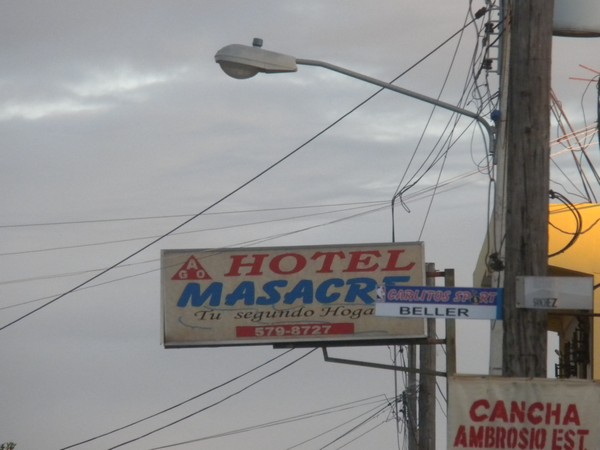
Ooh, let's stay there!
I got up at 7 at the sound of sirens which I surmised signaled the opening of the border. Racing to get ready, I reached the immigrations office at 7:30, only to find that it wouldn't be opening for another hour and a half. So I wandered the streets and found a plate of yucca topped with spaghetti and accompanied by a cup of warm milk for 50 pesos. Returning to the border, the Dominican officials eyed my exit tax receipt curiously and then, figuring they had nothing to lose, told me to pay $25; I responded "Ya pague el impuesto" and they immediately stamped my passport and gestured to the door. A crush of Haitians were being held back by a giant metal gate; from time to time, one would thrust a passport through the crack, a soldier would look through it for a visa, and then, open the gate just far enough for that one to squeeze through. I shoved my way through this mass of desperate humanity and went to the Haitian immigration hut and paid $1 to get a stamp and departure card.
Compared to the wasteland of Malpasse, Oumanithe was a presentable little town with a friendly park and nearly coherent grid of streets. I grabbed a tap-tap to Trou du Nord; I had identified this town on Google Maps as being the closest that the main road came to decent mountains. At the driver's signal, I got off the bus, grabbed a quick bite to eat, and started walking in what I guessed was the direction of the mountains. As it turned out, there was a road along the first part of my target route, and though it didn't show up on maps, was likely one of the finest in the country. Work crews were shoveling and raking along the entire route, and pretty much everyone stopped whatever they were doing to ask me where I was going; one woman offered to let me take over her shoveling job, but I politely declined.
Somewhere along the route, a gang of men stopped me, and one among them assumed a policing role and demanded to see my ID. I told them it was back at my hotel in Cap and they proceeded to ask me what was in my pockets and bag and claimed that I couldn't pass until I complied. I took out my GPS and explained what I was doing, but when they pushed me to show them more of my stuff, I made to return in the direction I had come; they relented and let me pass. This same sort of encounter would play out a few more times over the course of my walk; a seemingly random guy would claim some authority and ask to see my credentials, and, gaining confidence, would follow that up with increasingly invasive questions. The best way to avoid this seems to be to always look as if you know exactly what you are doing, and keep conversations with random guys on the roadside as short as possible.
No one knew about a trail to Grand Riviere and told me repeatedly that I was certainly lost. The road took me to the town of Saint Suzanne, which was, more so than any other I had found in Haiti, a picturesque mountain town. I spotted a radio tower on a grassy hill up above the town and hiked up to it; there, I noticed a trickle of people making their way along a ridgeline trail; I asked one and found that it was in fact the way to Grand Riviere. The footpath was truly excellent; it followed grassy ridgelines through an incredibly scenic mountain landscape, was clear and easy to follow for its entire length, and had next to no people on it. In one place, I passed a working cane grinder that was being driven by a team of oxen; had I thought much about it at the time, I would certainly have asked for a liter of fresh cane juice since my water supply was all but depleted. I eventually came to the town I sought and had no choice but to take off my shoes and cross a stinking, garbage-filled (not so grand) river. On the other side, I found a market stall where a woman, operating a restaurant out of the usual assortment of buckets sitting in mud, but wearing an immaculate royal purple dress, served up an excellent dish of rice, peas, legumes and meat out of buckets for 50 gourdes. I soon discovered that there were no hotels in town and I had no choice but to take a bus into Cap Haitien for the night. I found the bus station, but decided to explore the town a bit more, and, in the interim, the last bus of the evening took off for the city.
I began to discuss my plight with some of the townsfolk, and was soon surrounded by a throng of curious locals. They clearly found my predicament fascinating. One man who was visiting from Milot knew how to speak English and served as my translator. A kid offered up his house, but I declined on the grounds that I had no idea who he was. I was taken to a hospital run by a Cuban brigade; the Cubans were not allowed to leave the grounds after dark and were rather surprised to see me. One English-speaking Cuban lady looked into renting me a room, but there was apparently some red tape in the way; she explained to me that the country was a fallen state with nothing to offer tourists and little hope of recovery, and that I should get on the first flight out. The Cubans sent me with a Haitian guy who worked there, to try to arrange a place to sleep. We went to the police station, but they had little to offer me beyond a 1000 gourde ride into the city. Next, we stopped by a mansion that housed the employees of the town's Presbyterian church; the guy in charge seemed to want nothing to do with me and asked that we get permission from the mayor before I be allowed to stay. We walked across town to the mayor's office but found it to be closed, so we returned and debated with the man some more; finally, after a long set of questions aimed at figuring out if I were carrying any firearms and if I were in fact an American spy, he set me up with my own bed in a private room. The guide I had picked up at the hospital was apparently above asking me for money and asked for mobile minutes instead; he asked for my phone and attempted to execute an order that would send himself 10 gourdes; this failed for some reason, so I gave him some spare change instead.
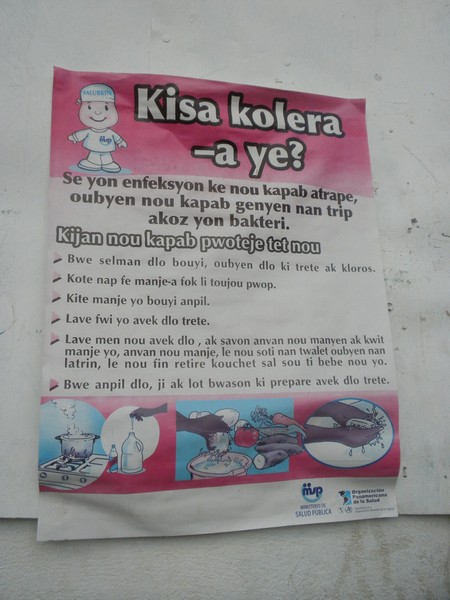
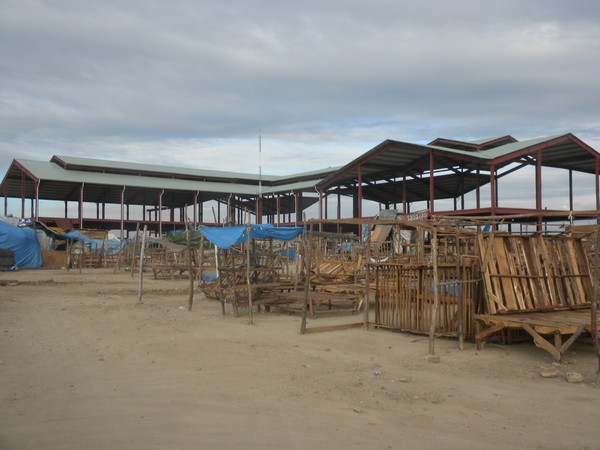
Old and new border markets
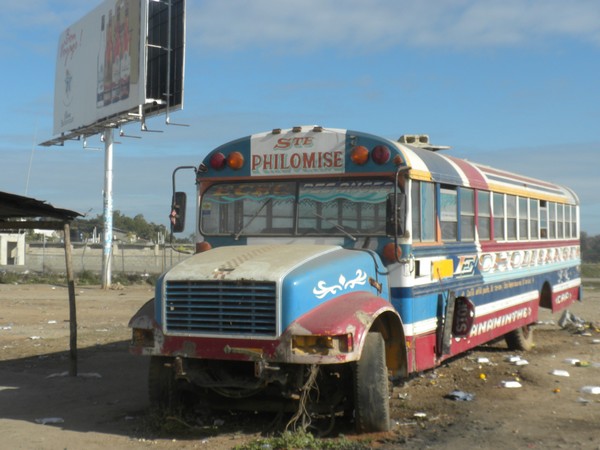
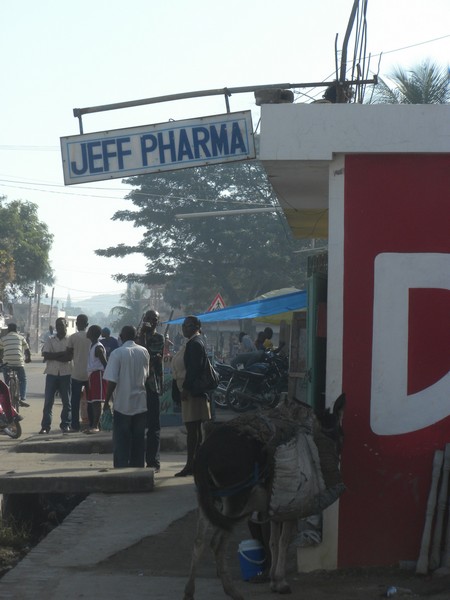
Another peculiar placement of my name

Hike to Grand Riviere
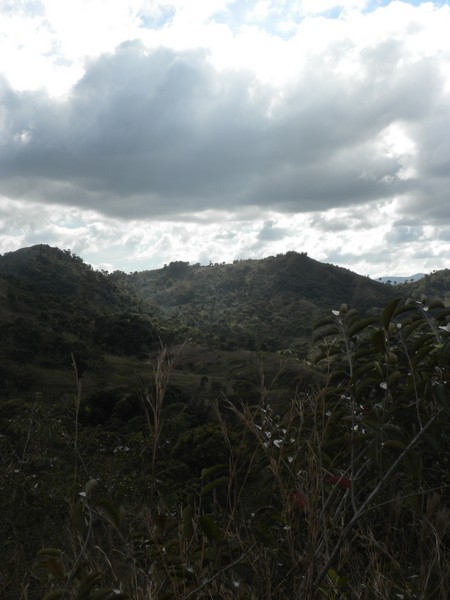

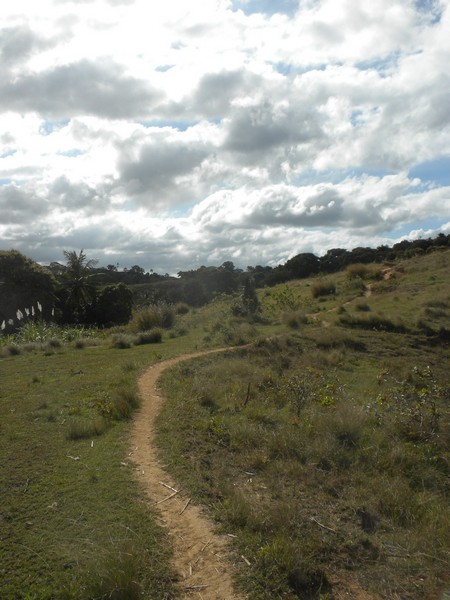
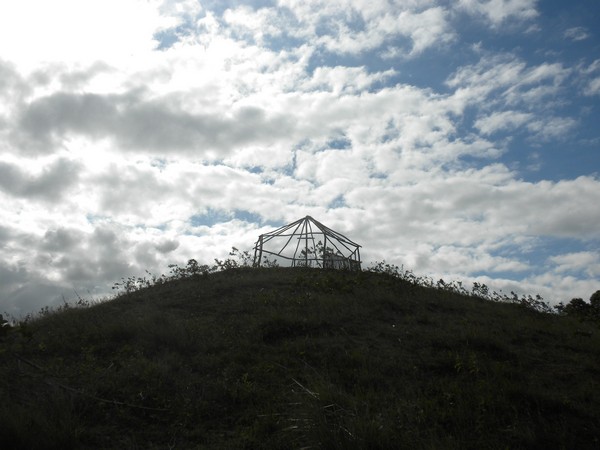
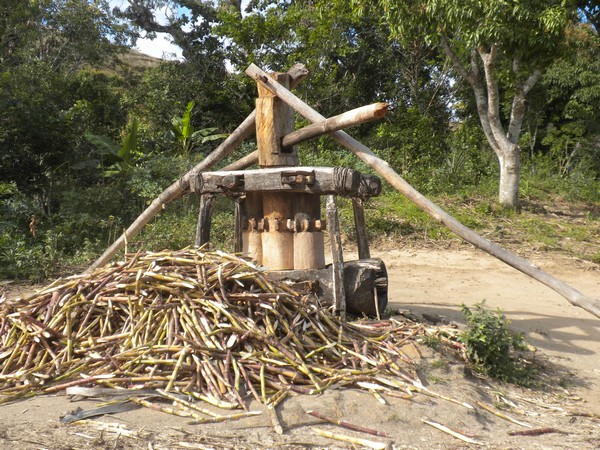
Cane grinder - saw one down the road being operated by a pair of oxen
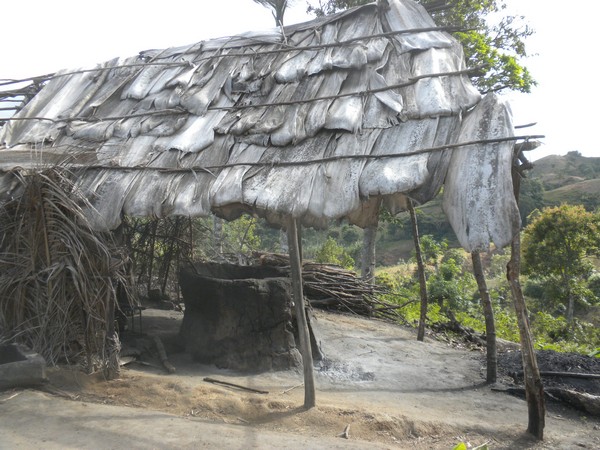
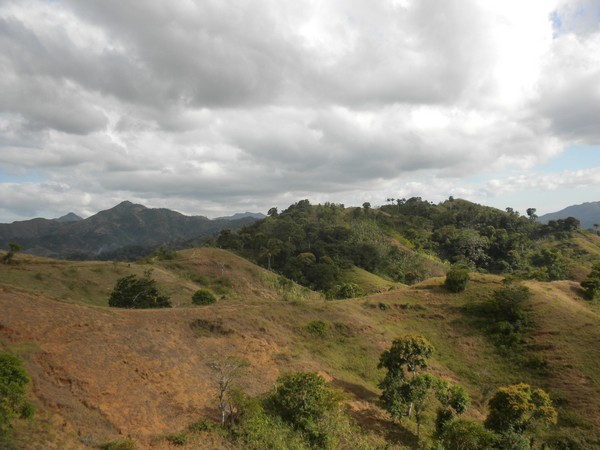
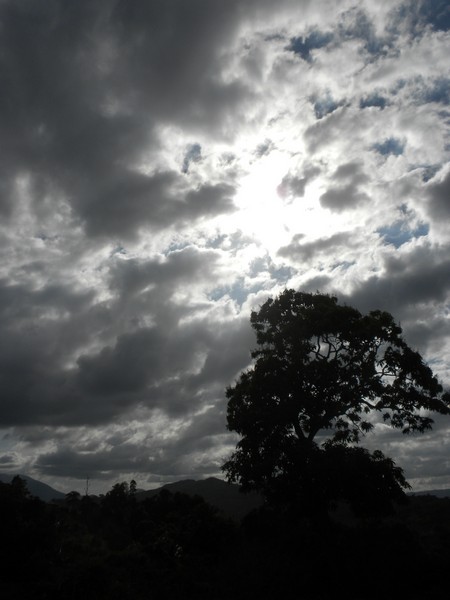
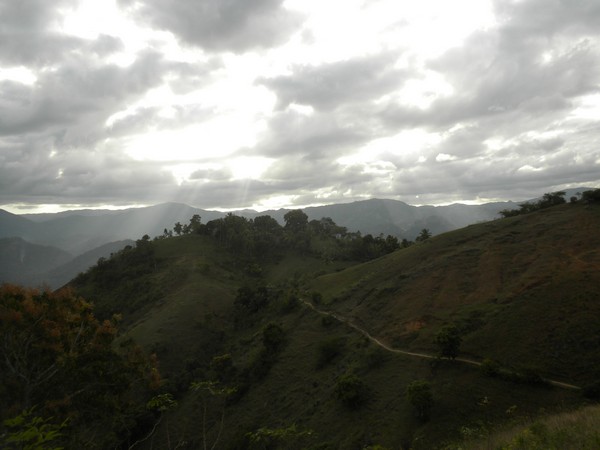
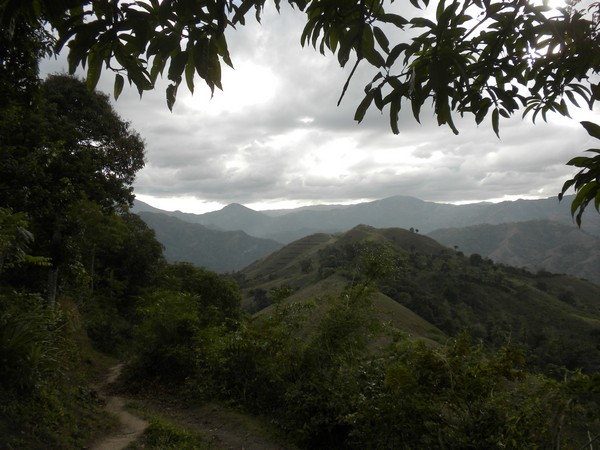
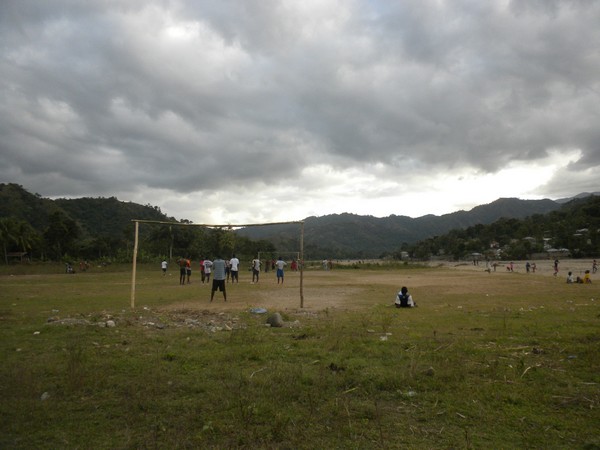
Grand Riviere futbol field
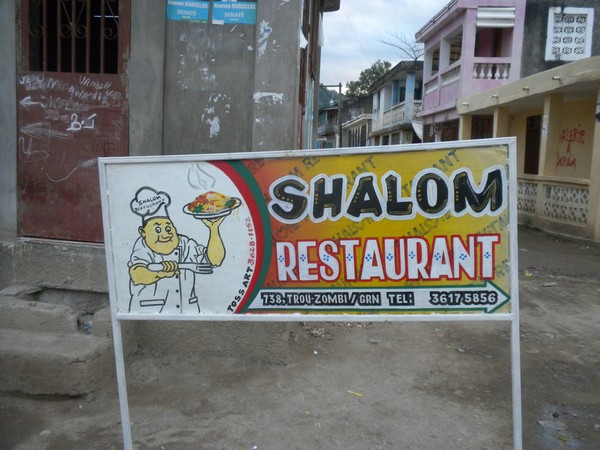
When I got up early the next morning, my host was nowhere to be found, so I cleaned up as best I could and took off walking. A man along the road welcomed me and bought me a cup of coffee and some bread; there was no water filling station around, so I bought 5 of the 4-ounce plastic satchets which would hopefully last me through the next set of mountains. I followed a difficult 4wd track through a long series of ups and downs until it ended in a small village; I neglected to write down its name, so I will refer to it as simply "The Village of Thieves". I passed through this place, and began following a trail in the direction of Dondon; a couple of villagers spotted me and asked me if I were lost, and directed me to follow a nearby trail that would get me to where I needed to go. Shortly thereafter, however, they decided it would be better if they could extract some money from me, and chased me down, and told me I couldn't go the way I was going, and that I would need to return to the center of town and follow a different path. The leader of the group, Alize claimed he was a police representative and went through the usual routine of asking to see my identification and what was in my pockets and bag, and told me that, the trails were quite convoluted and, for my own safety, he wouldn't let me leave without a guide. After debating this point for some time, I finally relented and said I could pay up to 200 gourdes. No one seemed all that thrilled about walking all the way to Dondon for that sum, but finally one man volunteered. Alize demanded that I pay the money then and there, but I argued that this was not standard protocol and he eventually relented, but there was little ambiguity as to why my guide carried a machete along on the hike. Alize made me agree to talk to my organization about buying him a laptop for school when I returned home; he would call me about fifty times over the remainder of my trip to remind me of this fact.
We hiked out of town and for some distance along scenic mountain trails. Once we were in sight of the Citadelle, my guide demanded the money, and though we were still far from our destination, we were also in the middle of nowhere, and one machete short of a fair fight. After hiking a little ways further, we reached the highway which the guide declared to be Dondon. Once he had left to return to his village, I consulted my GPS and found that I was still three miles from my destination, and I had little choice but to follow the road the rest of the way. Rather than show me the right path, the villagers had taken my money and led me on the fastest route to the road, supplying my GPS with nearly worthless data.
In Dondon, I stopped in and had liver and onions for lunch. I had a conversation with an English-speaking guy who spoke of his job as a local judge and then slyly incorporated his bill into mine. I was caught off guard finding an old-fashioned conman here; I had figured this was a symptom of a much later stage of tourism development. Just outside of the town center is an abrupt mountain which is covered in karst formations and riddled with caves. My lunch date, who had decided to delay his court duties and assume a guiding role for a bit, told me that there were more caves in the immediate area than I could visit in a day. He showed me the way to the first cave, which was marked by a large, obvious sign, and exclaimed how the fortunate it was that I had found him before returning to town. I followed a treacherous trail up through the thick brush which covered the karst, fearing that at any moment, some of the brush might give way and deposit me in a deep cavern. I found a handful of entrances, as well as a few goats who someone had tied up on a high, hugely inaccessible ledge.
Attempting to find a trail that would take me to the Citadelle, I ran across a local teacher and his wife who were collecting water from a stream. The teacher took me to another cave, which he refused to enter because of the vodou magic within. Despite all my efforts to explain what it was I was trying to do, he took me back to the road and explained how to get to the Citadelle from there. Back on the highway, a man with a cowboy hat walked alongside me and showed me a path a mile further that would take me up the mountain. The second I got to the main Citadelle trail, a guide/beggar caught up to me and began telling me about the history of the place; I tried to explain to him that I was not going to the fort and had no need for a guide, but he clearly had a lot of free time on his hands and followed me down the mountain all the same. Having already jogged this trail on my previous trip to the island, I opted to take a mototaxi for a very bumpy ride down the cobblestone into Milot. There, I immediately jumped on a tap-tap and took off for Cap.
In the city, I waded through a few dozen blocks of chaotic markets and then set off to find internet. I enlisted the help of a local who took me to around eight cafes before finding one with a working connection. Exiting the café, it was already dark and I wandered about trying to track down a cheap hotel. The first I found was $55, and the next $40, then I found a place right on the main square with a listed price of $70, but the woman seemed very open to negotiations and I got my pick of rooms for $30. The place was ultra-kitsch; colorful murals adorned the walls and plastic flowers lined every hallway, and a bird call synthesizer resounded continuously through the complex until the power went out at 3am. My room was a suite with an attached kitchen and what appeared to be a shrine of some sort. Like in any Haitian hotel worth its salt, there was easy roof access, and from the top you had a bird's eye view over the square and the rest of the city. Wandering the dark streets for a time, I eventually found a dinner of spaghetti with ketchup and spicy mayo, then returned to the square to people watch, and headed for bed around the usual time of 8PM.
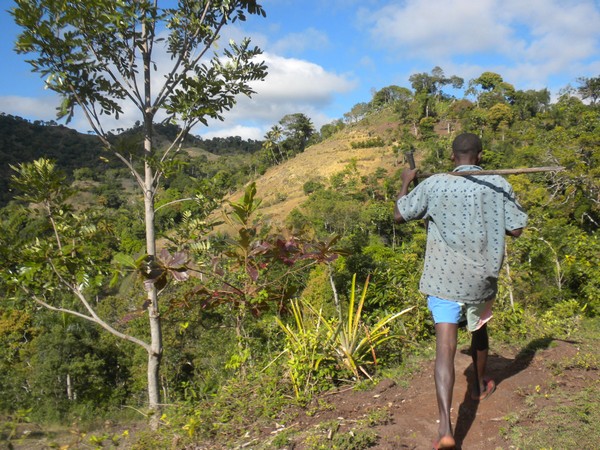
It was never explicitly stated, but the sharp implements he carried were most likely to insure that I paid my bill
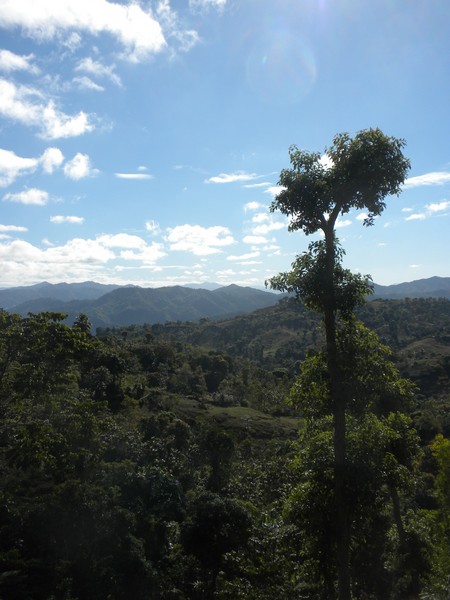
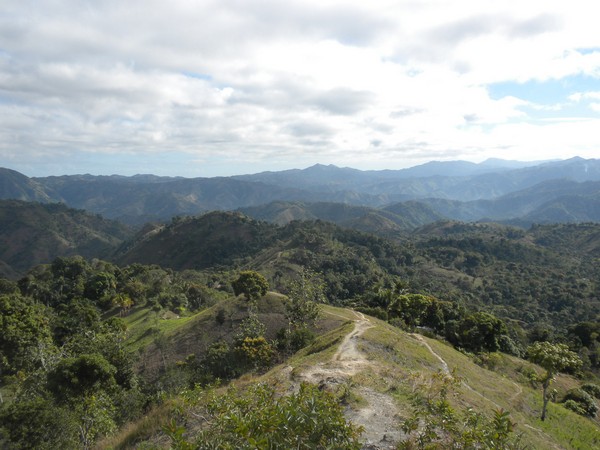
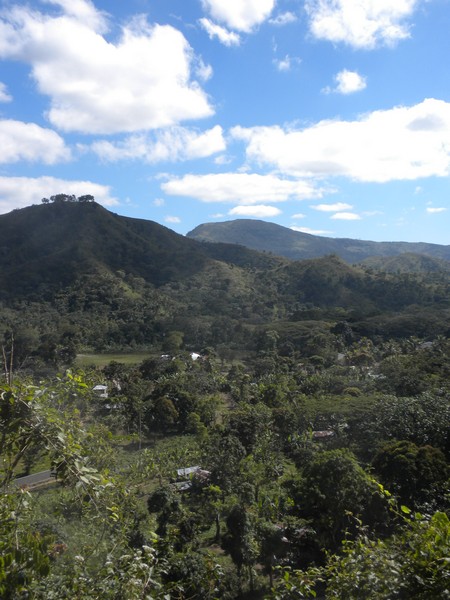
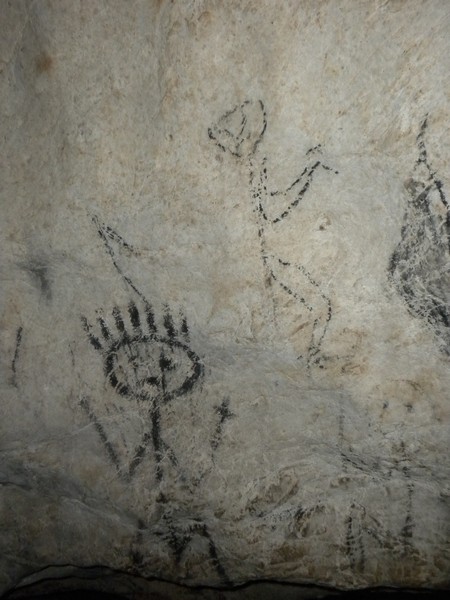
Taino cave art
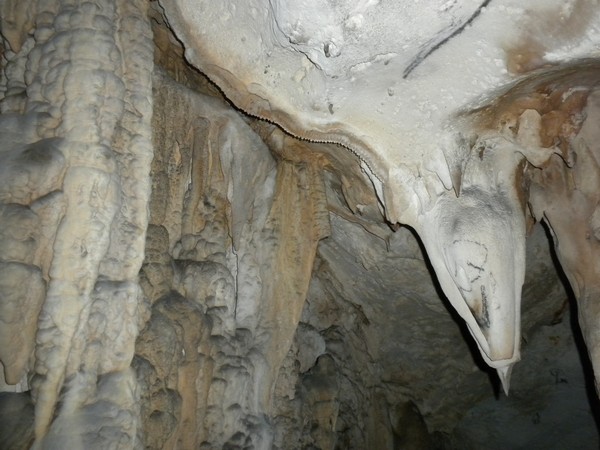
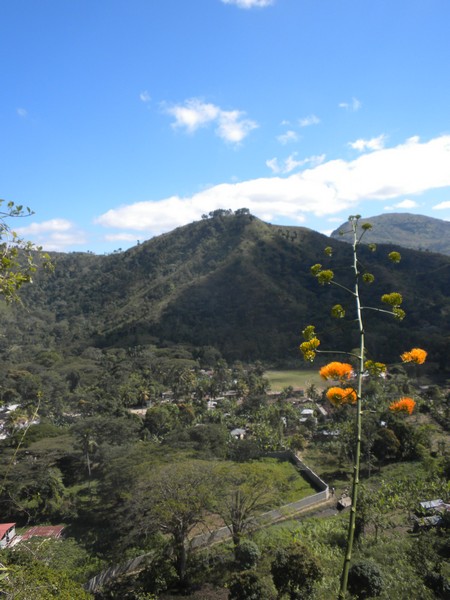
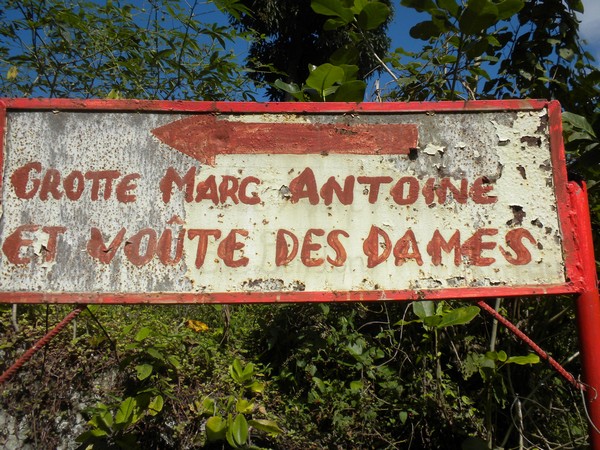
More caves!
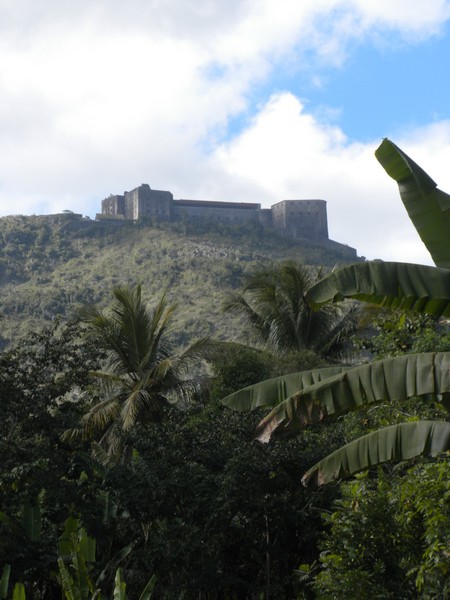
The Citadelle
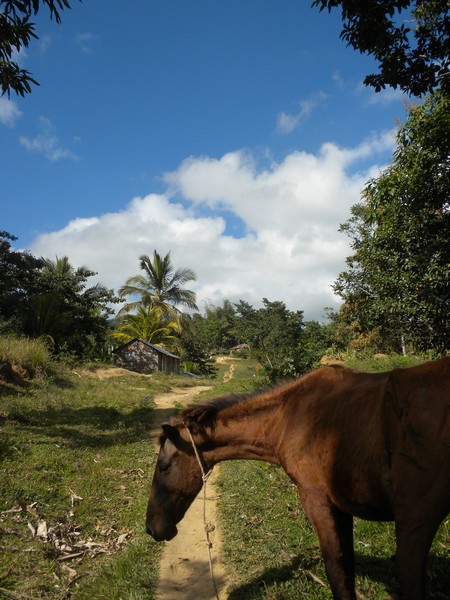
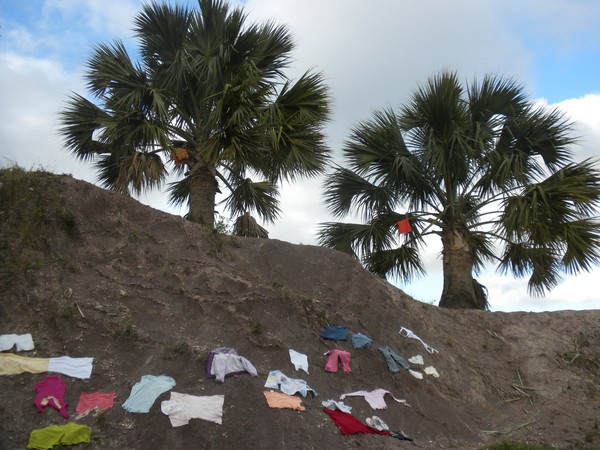
Drying clothes
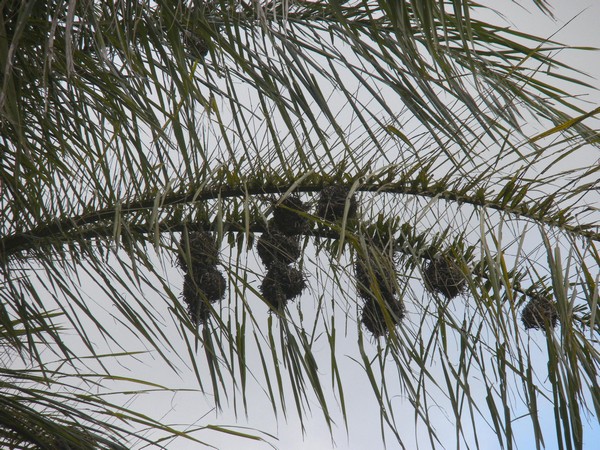
Birds' nests
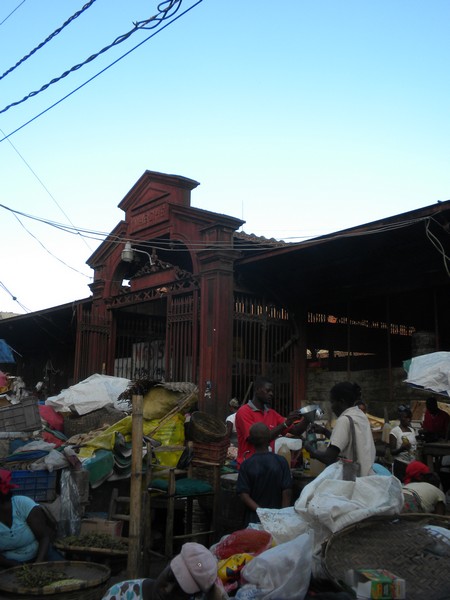
Cap Haitien's Marche du Fer
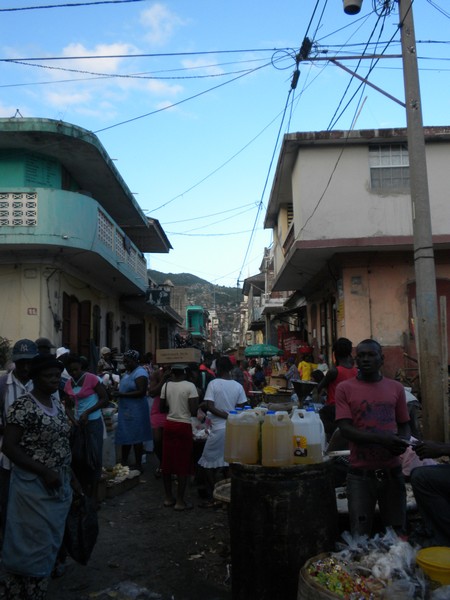
30 city blocks of market!
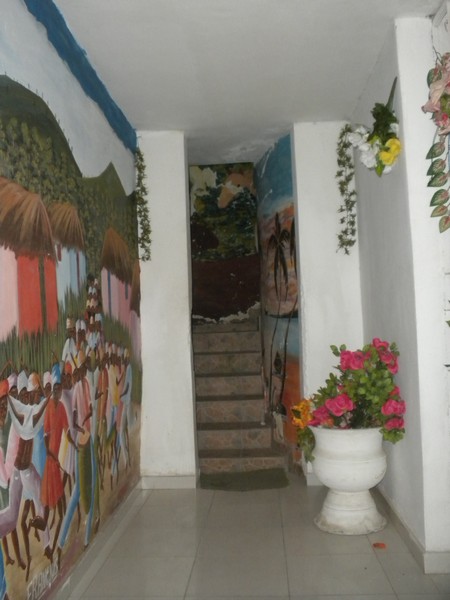
Bizarre hotel
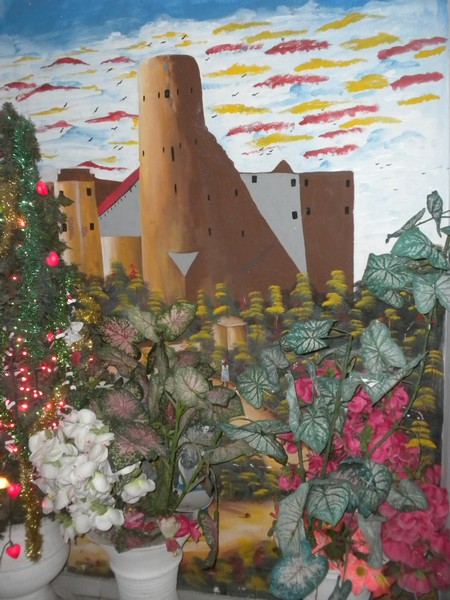
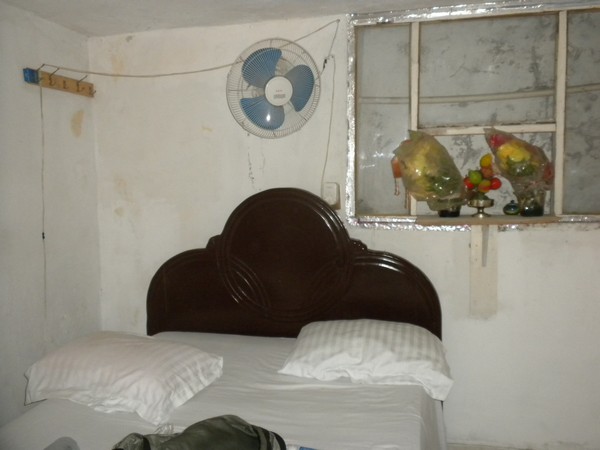
My deluxe room with attached shrine
A small blurb in my guidebook explained that a large vodou festival, lasting for two weeks, was held twice a year, in a small suburb of Gonaives; as it happened to be January 6th, the first day of Soukrit, it seemed I had little choice but to make my down there as soon as possible. I took a bus along a fantastic mountain road, and at many points had to resist the urge to jump out and start hiking. As we approached Les Poteaux, a small market town which held the turn-off for Soukrit, the driver gestured to the empty desert, and, with a tone of disbelief, asked me ‘you want to get off here?' I fought through the hesitation that suddenly welled up, as I realized that, with nothing to go on but a vague, outdated paragraph, I was about to wander out into the desert and dive headlong into a system of beliefs I knew nothing about. I got some lunch from the market and turned on to a road leading out into a vast grey emptiness. I was reluctant to ask directions because I had no understanding for the local perception of the festival or how people might feel about attendance by a clueless foreigner. But only a hundred feet after I missed the turnoff, a family sitting on their porch asked me if I were lost and pointed me in the right direction.
The "lakou" of Soukrit was a small collection of houses situated around a temple complex. A ceremony was in progress inside and I warily kept my distance, but someone sitting in the courtyard invited me to go and look through the window of the temple. Inside, about thirty people, dressed all in white sat on benches around the room and a head priest and some drummers sat facing them. The whole setup reminded me of a Krishna temple; the congregation belted out a repetitive chant while the drummers kept the beat. A small alter with some candles, booze, sodas, and cakes sat on the floor towards the front. One woman on the edge of the room held three live chickens in her hands. Two white women, clothed the same as the others, sat in one corner of the temple. Several Haitians in plain clothes, some with camera phones at the ready, looked on expectantly from the courtyard. Three extremely cute goats were tied to a pillar outside.
Suddenly, one of the women in the crowd started flipping out and screaming and ran to the front of the room; the head priest spun her one way and then the other, and then she began to dance in the middle of the room in a trance-like state. One by one, nearly everyone in the crowd (white women excluded), did the same and soon there was a room full of devotees doing an uncoordinated zombie dance. When the woman with the chickens flipped out (greatly perturbing the chickens), the next woman on the bench casually took hold of them. Each of the chickens was sacrificed and their blood was poured into a bucket. This blood was mixed with rum and other drinks, and bottles were passed around and the zombies drank substantial amount. Next, the goats were led in, kicking and screaming the whole way, seemingly possessing some innate understanding of what awaited them. Three of the zombies threw goats over their shoulders and marched in a circle around the courtyard. After they had returned to the temple, someone slit the throats of the goats and poured some of their blood into a bucket. The zombies once again slung the goats over their shoulders and marched around outside, but this time, the goats flailed about and sprayed copious amounts of blood in all directions; I cowered in one corner of the courtyard, within easy range of the unpredictable zombies and their writhing victims. The goats were carried back inside, some guy hacked off their balls, and their bodies were heaped in a pile in the courtyard. The goat blood was mixed with the booze and the zombies drank and smoked prolifically, frequently dumping rum over their heads. Everyone moved out into the courtyard and continued the dancing and singing for another hour or so before finally taking a breather.
I talked to the American girls and found that they were living in the area and working for some sort of ecological organization. They were headed to another huge vodou festival that evening but had no idea where it was and had little advice on how I could find a place to stay in the area. I took a mototaxi into Gonaives and looked around at length for a cyber café so I could check into couch surfing. As it was nearing nightfall and no cafes were materializing, I headed to a guesthouse with an English sign; with zero negotiation they gave me a room for 625 gourdes, which was just as nice as anywhere I had stayed in the country; this was quite a shock since we had not been able to find anything less than $55 on our previous trip to Gonaives.
The central square of Gonaives is unexpectedly clean and well put together. A giant, modern church sits on one side, an impressive monument sits in the middle, and a stage in one corner is set up to host outdoor performances. Snipers sit at a few of the high points around the square, hiding behind sandbag barriers. I wandered around and talked to random college students. A crazy man wearing a baby bib soliloquized about something to a bemused crowd. Several roulette wheels were set up and kids were throwing down gourdes in the hopes of winning it big; each wheel had colorful action figures like Jar Jar Binks in the middle.
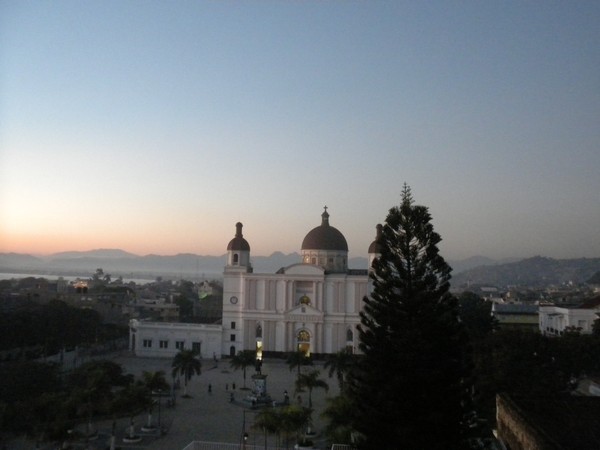
Central square
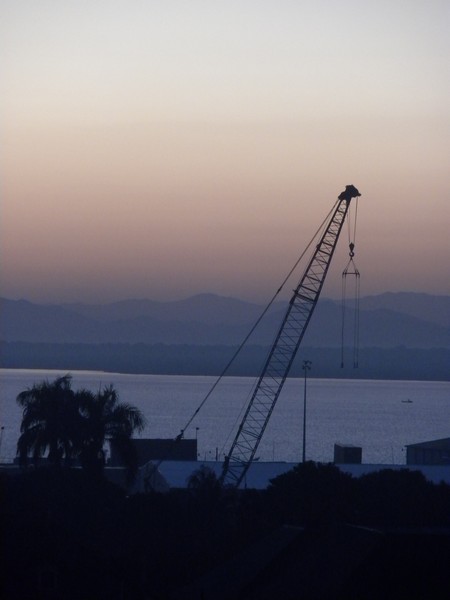
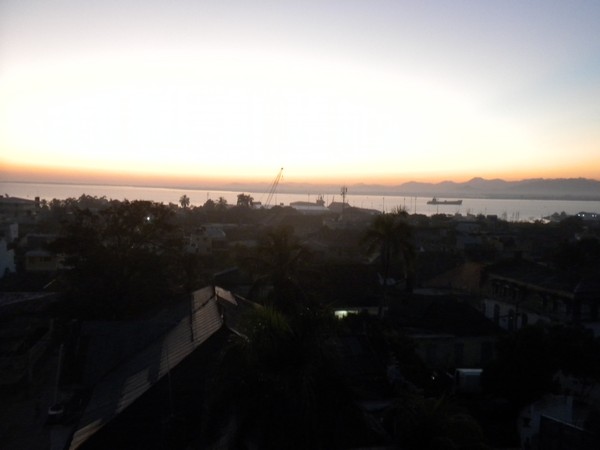
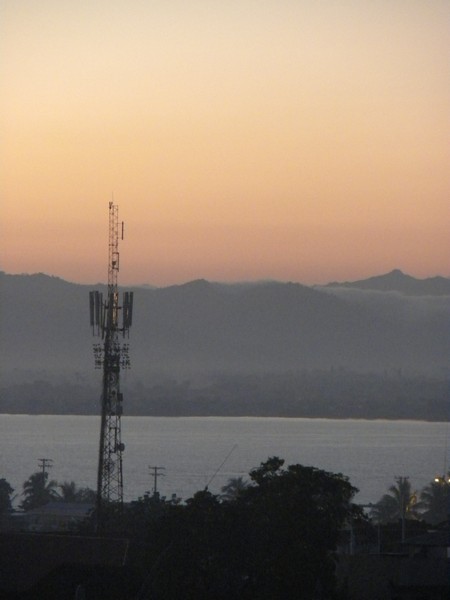
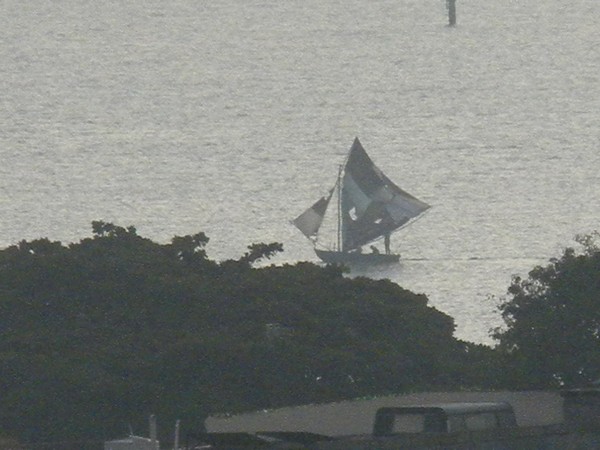
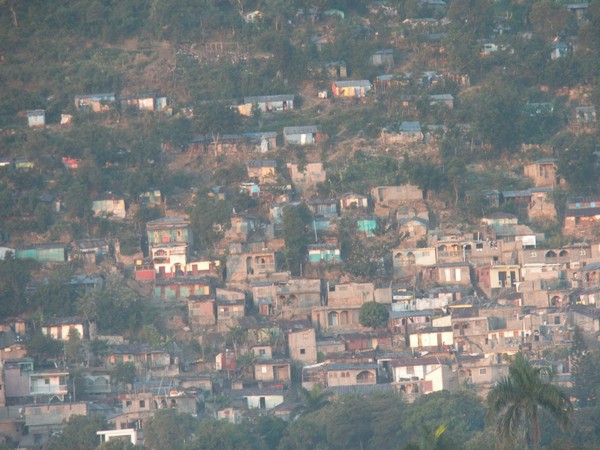

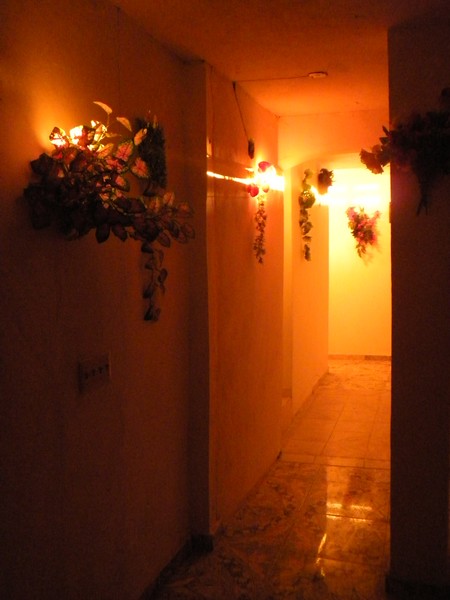
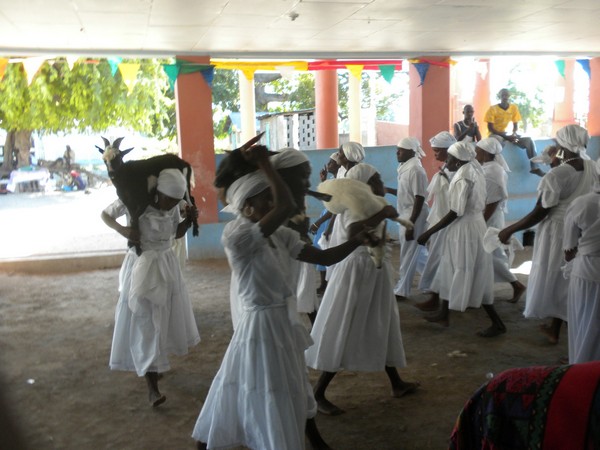
Dancing with goats
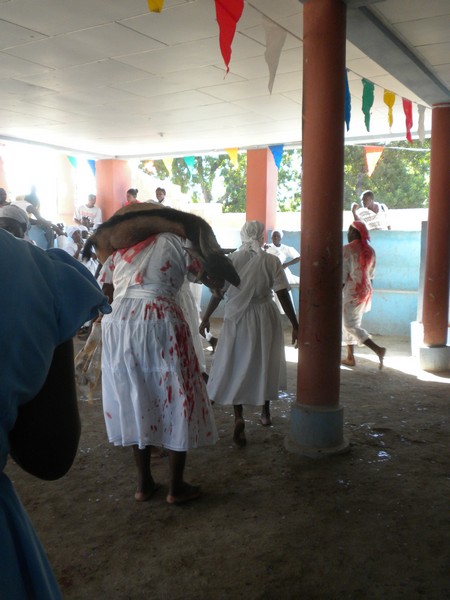
Splashing some blood around

The lakou of Soukri
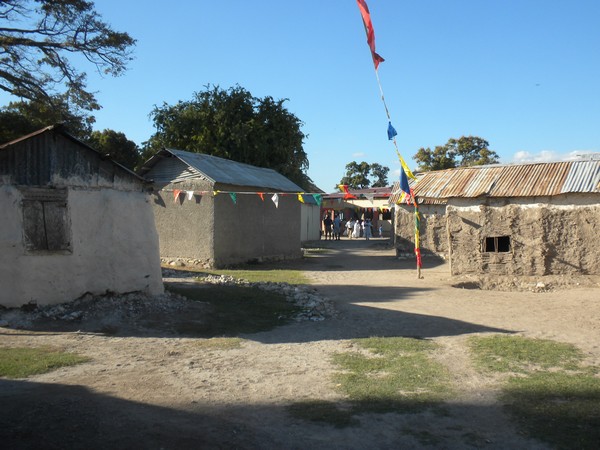
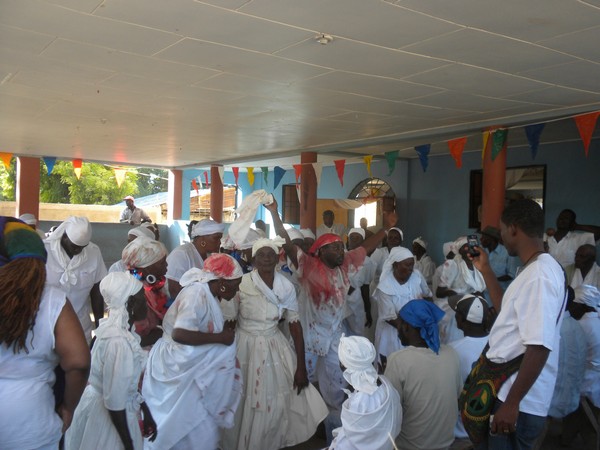
In a trance
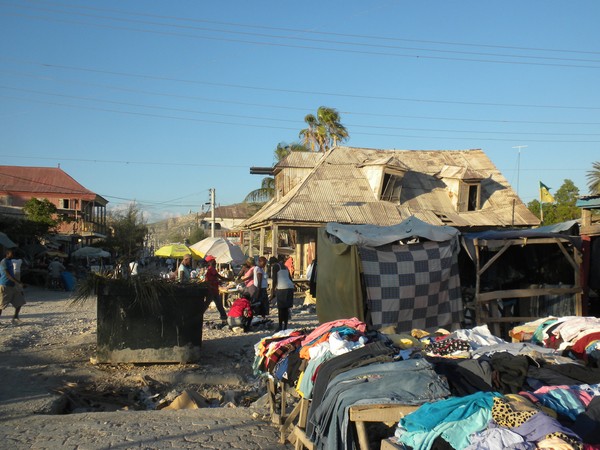
Gonaives

Jesus lamppost
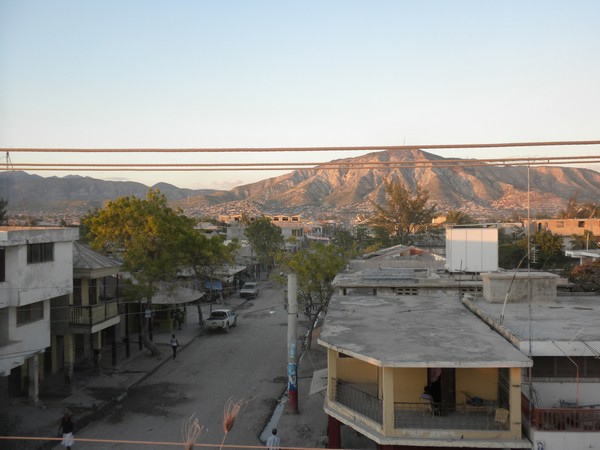
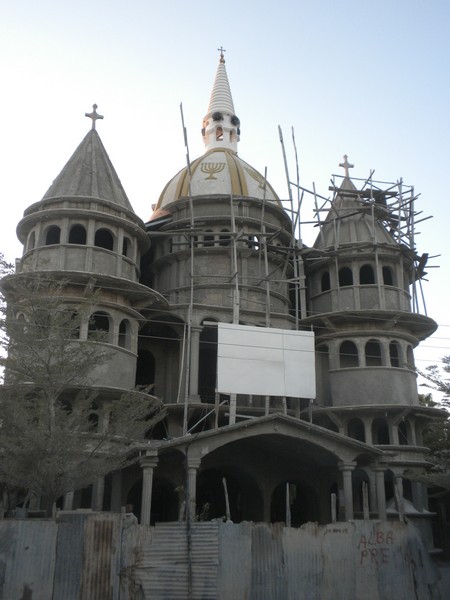
Doesn't look like much from the outside, but...
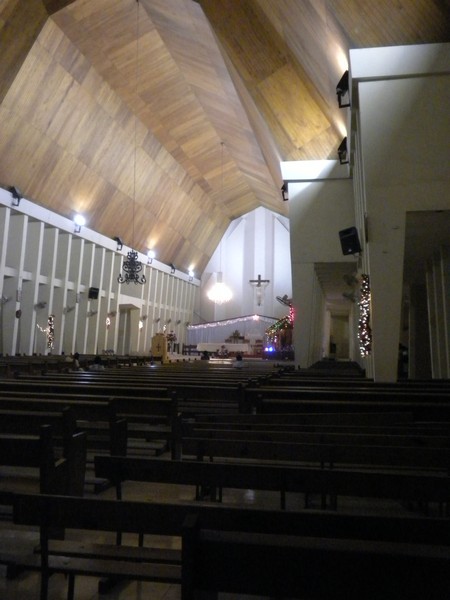
A surprisingly modern church
I got up at 5 to take an early morning bus to PAP; I was not previously aware that you could fit seven grown adults in a single row of a standard school bus, but this one was not going to budge until there were at least that many in every one. From the outskirts of PAP, I took a tap-tap in the direction of the airport and made it a few blocks before the route ended. The second tap-tap didn't get me much closer, so I stopped in at a tent to get a plate of spaghetti for the bargain price of 25 gourdes and took a mototaxi the rest of the way for 50. I went into the terminal in the hopes of convincing Spirit to let me fly back two days early, but they wouldn't even allow me to speak to customer service; the guard took my passport and returned five minutes later, explaining that it would cost $220 to change it. A group from Gainesville was set to arrive that day and I surmised that they would probably be coming in on Spirit. I went to the information desk to inquire about the flight, but the lady simply mumbled something incoherent and returned to reading her paper. There is no arrivals lounge and no way to know which planes have arrived, so I stood on an unshaded stretch of sidewalk and tried to read luggage tags as people passed. After two hours, many from multiple flights had come by but I recognized none of them, so I opted to give up and head back to Jacmel.
I would have expected that I might have figured out how to quickly and easily reach the Jacmel buses by this, my fourth visit to the station, but once again, I walked for miles through the putrid streets of a gritty industrial district and took several wrong turns before finally finding my way to Portal Leogane. This time around, I shared the gap between the minibus seats with another passenger, and, towards the end of the trip, she puked profusely on my pants and shoes. I still hadn't heard from the Gainesville group, so I called up Baba and asked if I could stay at his house again. Though it was nearing dusk, I wanted to make up for lost time and record another trail, so I opted to try to find the off-road option for the hike up the mountain. As I began the hike, several people told me I would get lost, but I imagined they were just trying to get more money from me, so I ignored them and kept following the GPS pointer through a constant progression of forks and turns. The trails turned to goat paths, and, as darkness fell, goat paths turned to desperate scrambling up a steep mountainside through thorny bushes. I was a little concerned that I might get mistaken for a cattle rustler, or fall in one of the many deep crevices that broke up the trail, but I was eventually able to climb up over the cliffs and find the road again. Reaching the house, I drank a Prestige and some rum with Baba and we chatted about his school. The women prepared another excellent meal of chicken and patacones.
I got Safaraz moving early and began hiking in the direction of Port au Prince. I thought that, after hours of trying to drive the point home, I had perhaps finally gotten through to him and he understood that I was looking for hiking trails, but I would soon learn that this was not really the case. After a brief hike down a dirt road, we began walking on the main highway connecting Jacmel to PAP. I asked Safaraz if we would reach a trail soon; he replied "Yes", but I surmised later that he had no idea what I had asked him and was just being agreeable. We walked for miles uphill along the busy road; I would occasionally try to take us up a promising trail but would usually end up back on pavement before too long. At one point, we went up into a village and talked with a swarm of curious locals. I only understood pieces of it, but I believe the local said something to the effect of "Yes, there is a trail to where you want to go, but it is a little rough and goes through mountains, so you should really just take the highway", to which Safaraz had naturally responded "Yes, that makes sense". Back on the road, my guide's friend stopped and asked if we wanted a ride on his motorcycle to the top of the ridge, but Safaraz had responded "No, he's a weird foreigner, he likes to walk", and so we continued hiking up the road. After we had gone some twenty kilometers, I was ready to be done, but Safaraz was intent on getting to a certain village that was supposed to be good for catching a ride, so we continued for another five kilometers. At the stop, I bid farewell to my friend and caught a ride on the roof of a tap-tap back to the capital.
Riding into PAP on a truck roof is simultaneously awesome and terrifying; from this perspective, you have a 360 degree view of the widespread decay and disorder that saturates every block, but at the same time, absolutely everyone can see you coming. I took a tap tap from Port Leogane to Delmas 65 and called the CouchSurfing lady. She was just on her way home and picked me up and took me to the grocery store. The store was defended by a small army of security guards wielding automatic shotguns and was chock full of white people. All the products were straight from Walmart but the prices were about five times higher. Natacha had about 8 other couchsurfers staying with her when I arrived, some for as long as a month. She was the nexus (and nearly the extent) of the Haitian couchsurfing movement and had just bought a second house to accommodate all of her guests. She gave me rice, peas and chicken for dinner, some of the other surfers and I watched a bootleg version of Black Swan, and I went to sleep on one of ten mattresses she had set up in the living room.
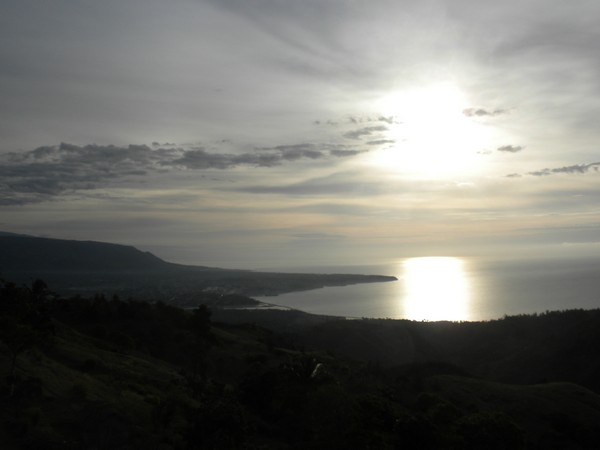
Sunrise over Jacmel

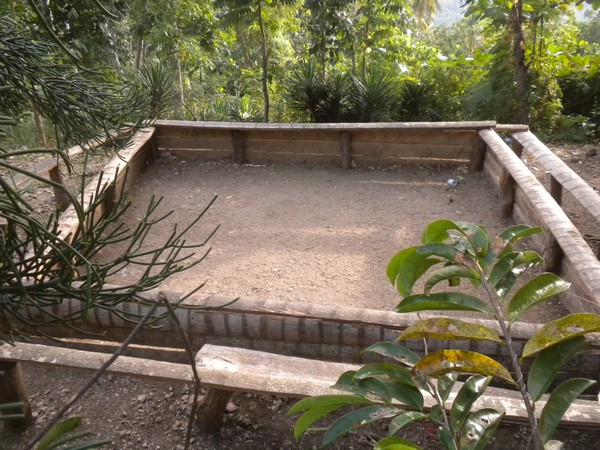
Cockfighting arena
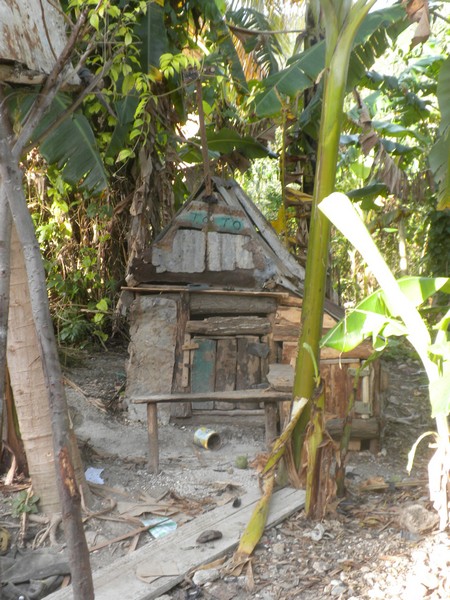
Doghouse
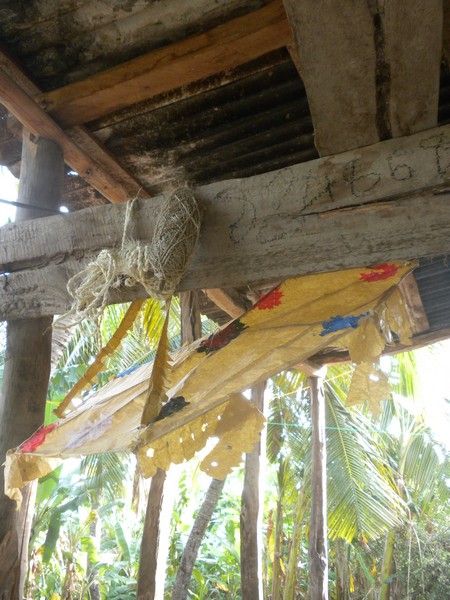
Kite
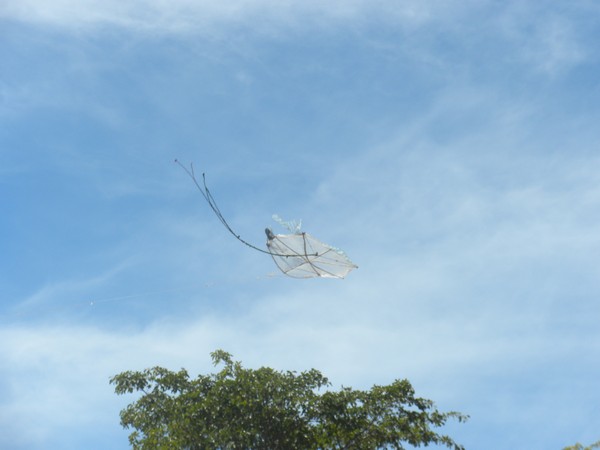
I got moving around 7 and walked back to Delmas where I got the usual series of tap taps to the airport. I picked up some rice and beans for 50 gourdes from the vendor just outside the terminal and got through security some 3 hours before my flight. There's not that much to the PAP departures lounge, but there is one closet-sized bar that sells drinks at a 300% markup. I met up with some American construction workers and had a few drinks and pastries, and spent the rest of the time conversing with other white people I found scattered about the room to see whether any of them, once on the ground, would be driving in the direction of Gainesville.
Back in Ft. Lauderdale, I found I had no clue how I was supposed to get home. I decided I would try to get to the turnpike service plaza from which several bus companies left, but there is of course no great way to do this using public transport. I got on a city bus and asked the driver for directions; he dropped me off at a random street corner, explaining that another bus would shortly arrive and take me to where I needed to go. This bus never appeared, as the corner was not on its route, and so I hiked to the central station and asked about a dozen more people who all gave conflicting directions. Finally, one driver seemed to think he would go right by where I needed to go, and so I hopped onboard. After a time, he pulled over at a random patch of woods and told me that he had seen other people dive through the bushes there. I followed these instructions and found myself in a homeless encampment, but beyond that was a fence I could scale, and then it was just a matter of sprinting across four lanes of speeding turnpike traffic to the gas station on the far side.
I asked the cop stationed at the plaza and he informed me that the buses were now stopping at the next plaza up, which was a good 30 miles away in West Palm Beach. So I was left to go from pump to pump and beg for a ride. One after another, each driver shot me down; it seems likely that the average person who pays the premium to drive on the turnpike through south Florida (rather than on I-95 just a few miles away) and stops at the overpriced gas stations would not be the first to pick up a hitchhiker. Finally, I talked to one college kid who responded to my initial appeal with "Sorry, but I just gave my last dollar to this guy at..."; I cut him off and made it clear I wasn't looking for money, and, after a brief pow wow with his dad, he agreed to give me a ride. Half an hour later, we were at the next plaza; Richard and his dad were quite concerned about my ability to find a bus at a service station and told me to call them if I needed a ride anywhere else. There were no signs for the buses and no one inside knew anything about them; the cop in the parking lot guessed that they usually came by around 4:30 or 6:30. Ten minutes later, a RedCoach pulled up; the driver called up the office for me and found that the price was $58.50 cash; I only had $56, so the driver covered the rest. After two movies and a bus change in Orlando, we reached the Southwest Rec lot at around 10pm.
It's a bit hard to gauge the success of this trip; as a proof-of-concept, I did determine that there are plenty of paths throughout the country, and it is in fact possible to hike these paths, eat local foods, and stay in local homes without getting shot or mugged, or contracting a lethal disease. There is a significant challenge associated with explaining the concept of hiking to Haitians, and this, coupled with instilling an appreciation for the importance of their natural environment, may very well be the biggest challenge with developing trails. While Haiti's countryside is beautiful, its cities are still quite overwhelming, and getting tourists past these gateways may be a formidable problem in itself. And the lack of decent quality budget accommodation may deter those who would be most likely to take an interest in Haiti travel. I hope that I can return at a later date with a slightly more coherent plan, more people, camping gear, and specific routes mapped.

"Throw your poop and vomit in the toilet"
| 1 US Dollar | = | 40 Haitian Gourdes |
| 1 Haitian Dollar | = | 5 Haitian Gourdes |
| 1 US Dollar | = | 37 Dominican Pesos |
|
Flight from Fort Lauderdale to Haiti: $141
City buses in Port au Prince and Petionville: 5-10 gourdes
Cheese milkshake: 40 gourdes
Bus to Croix de Boquete: 10 gourdes
Bus from Ounaminthe to Trou du Nord: 50 gourdes
Approximate total spent on ground in both countries over 13 days: $275 |